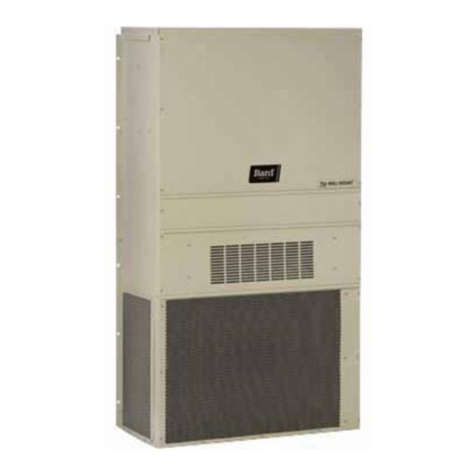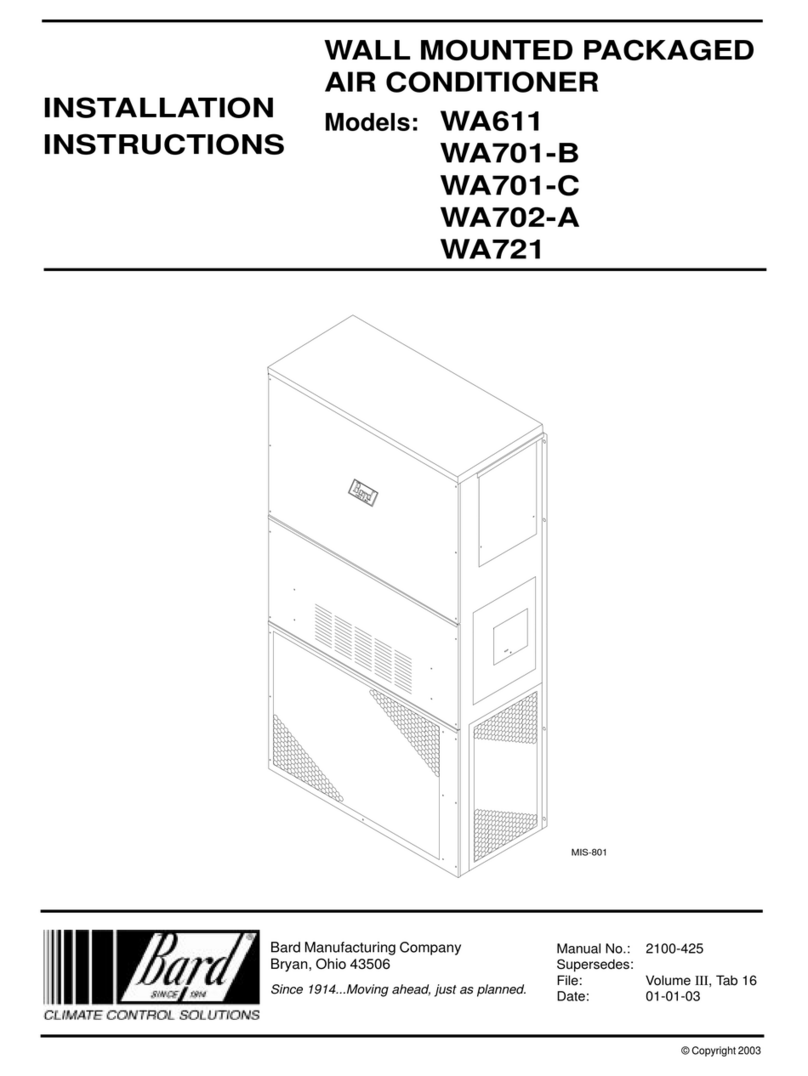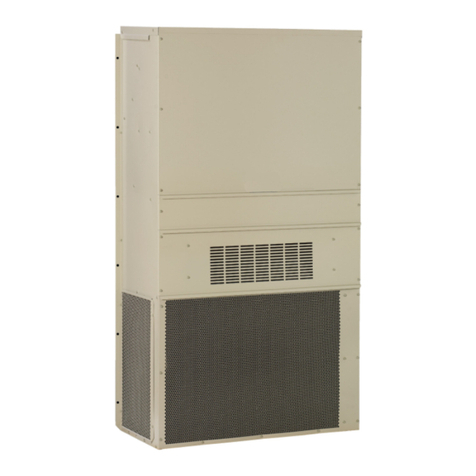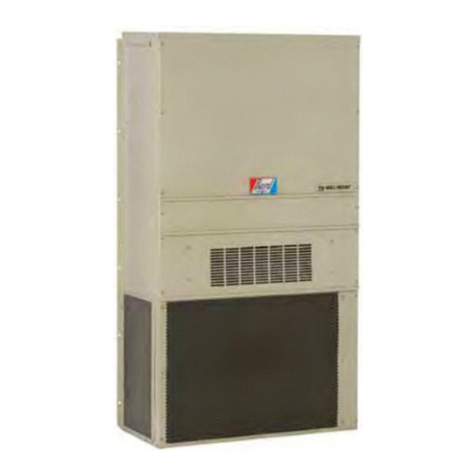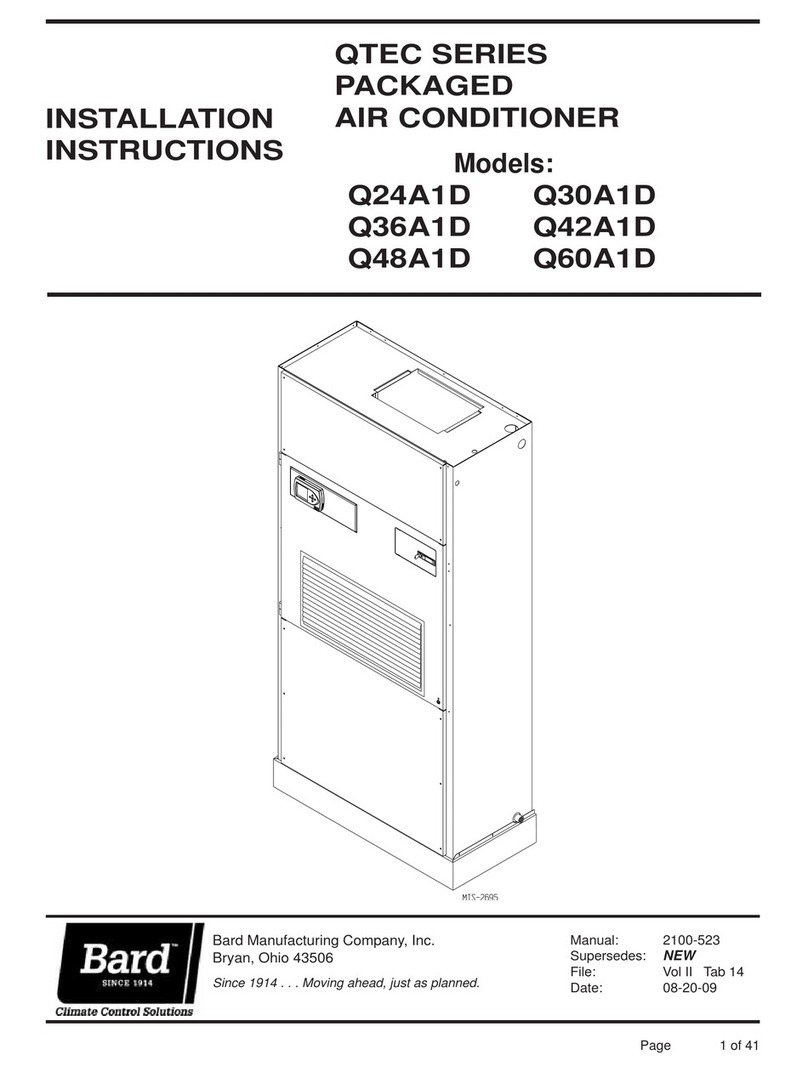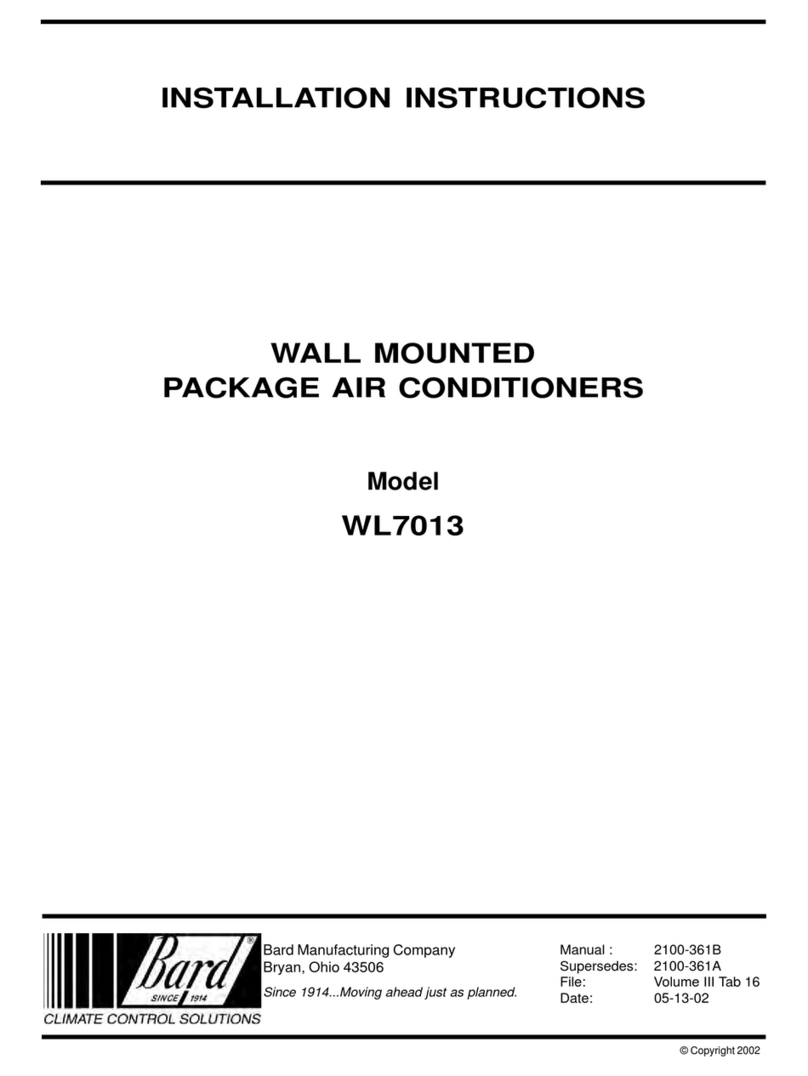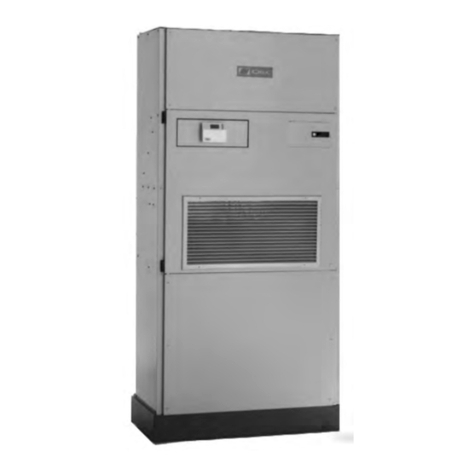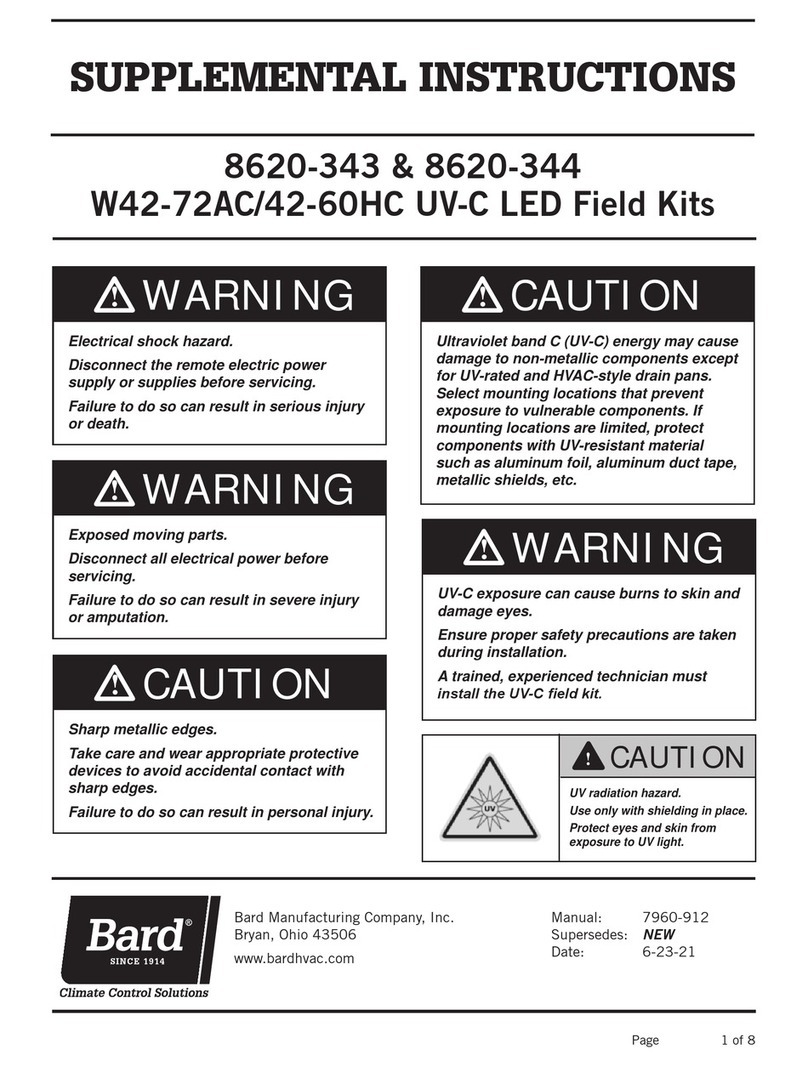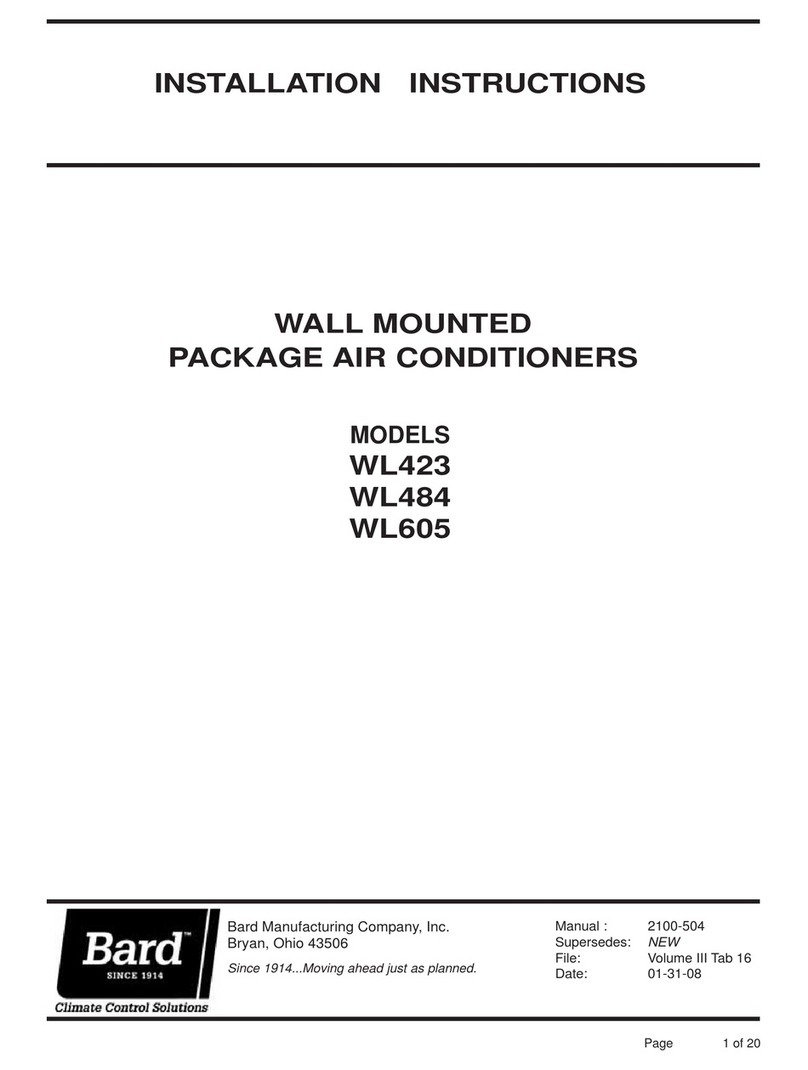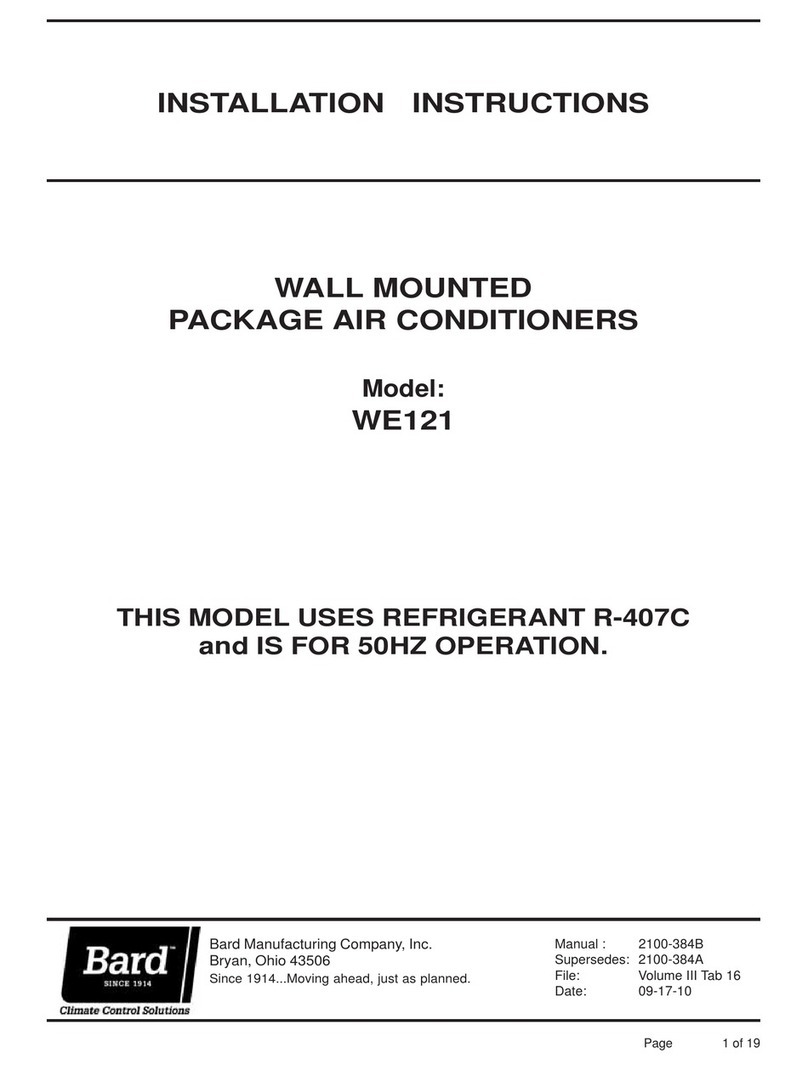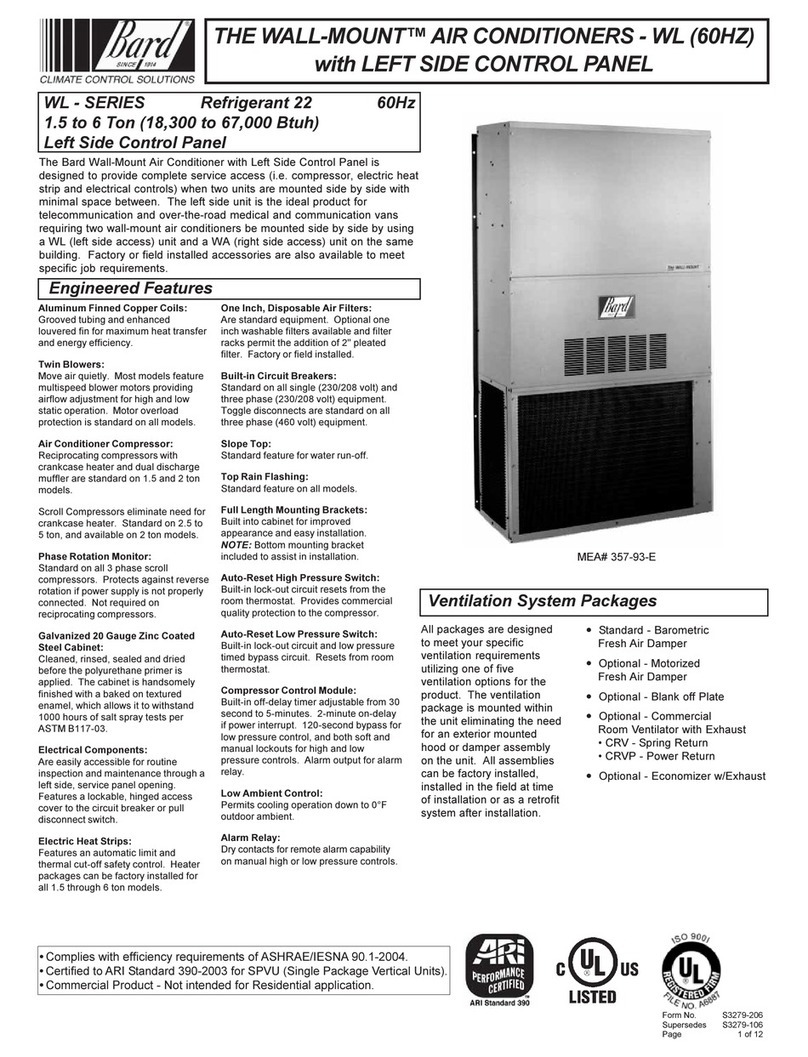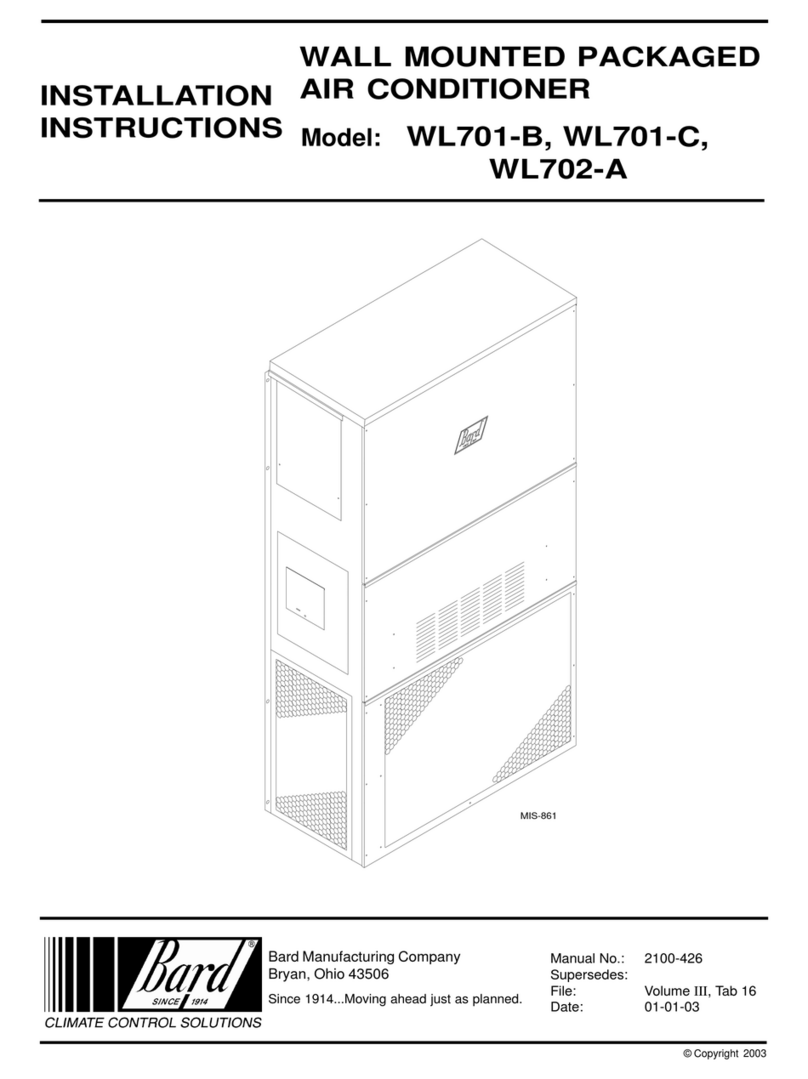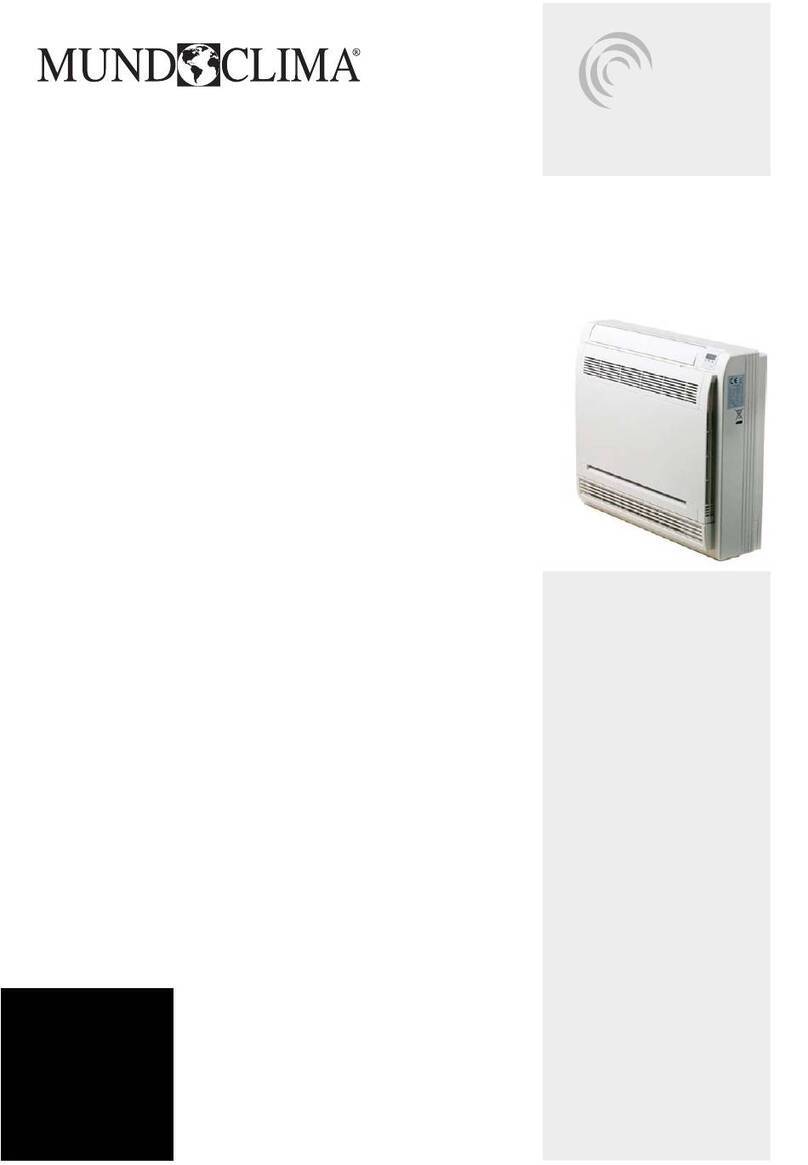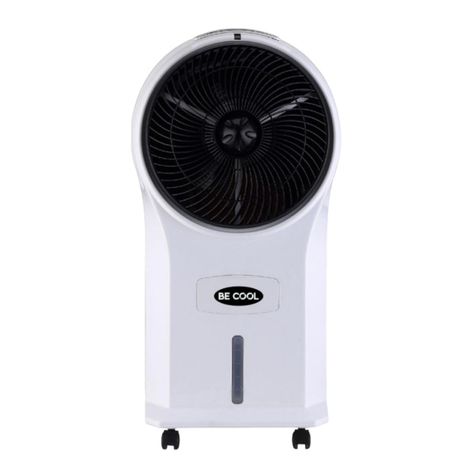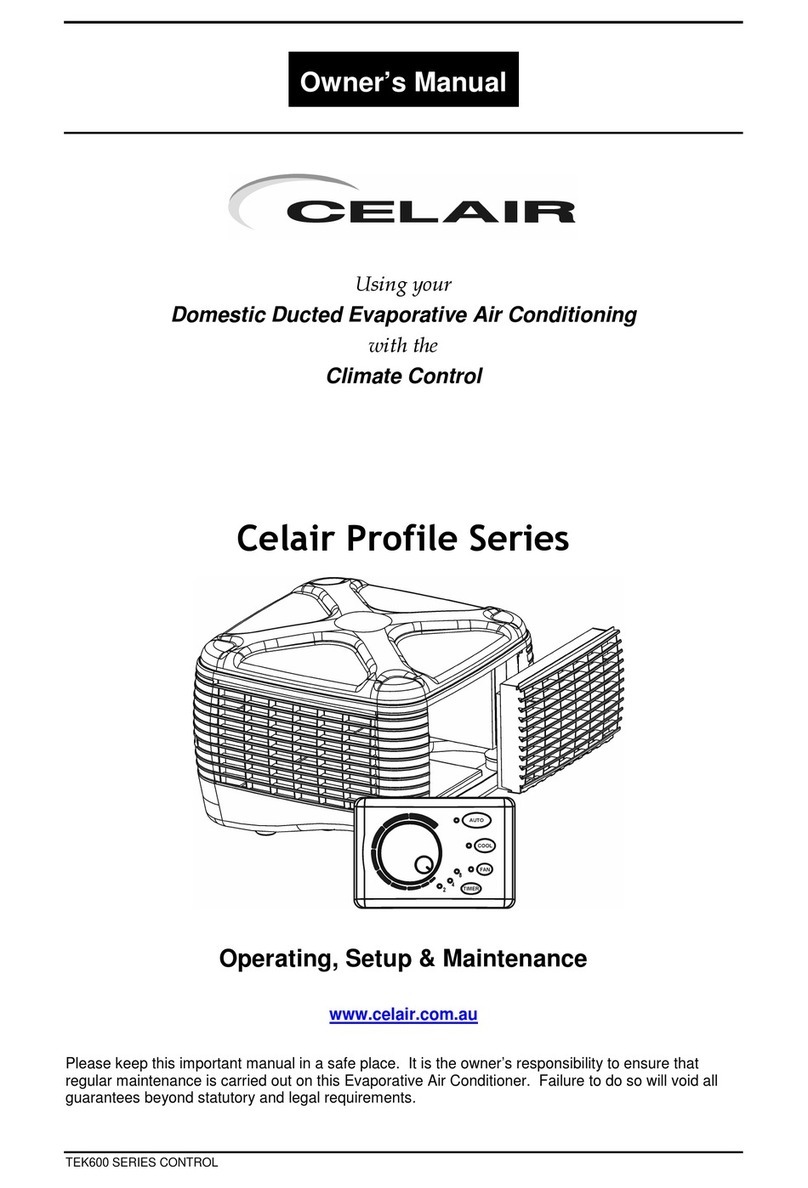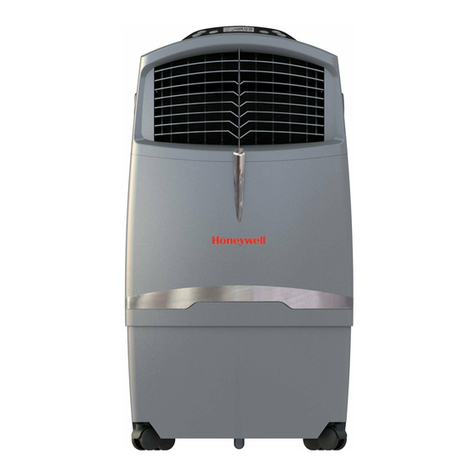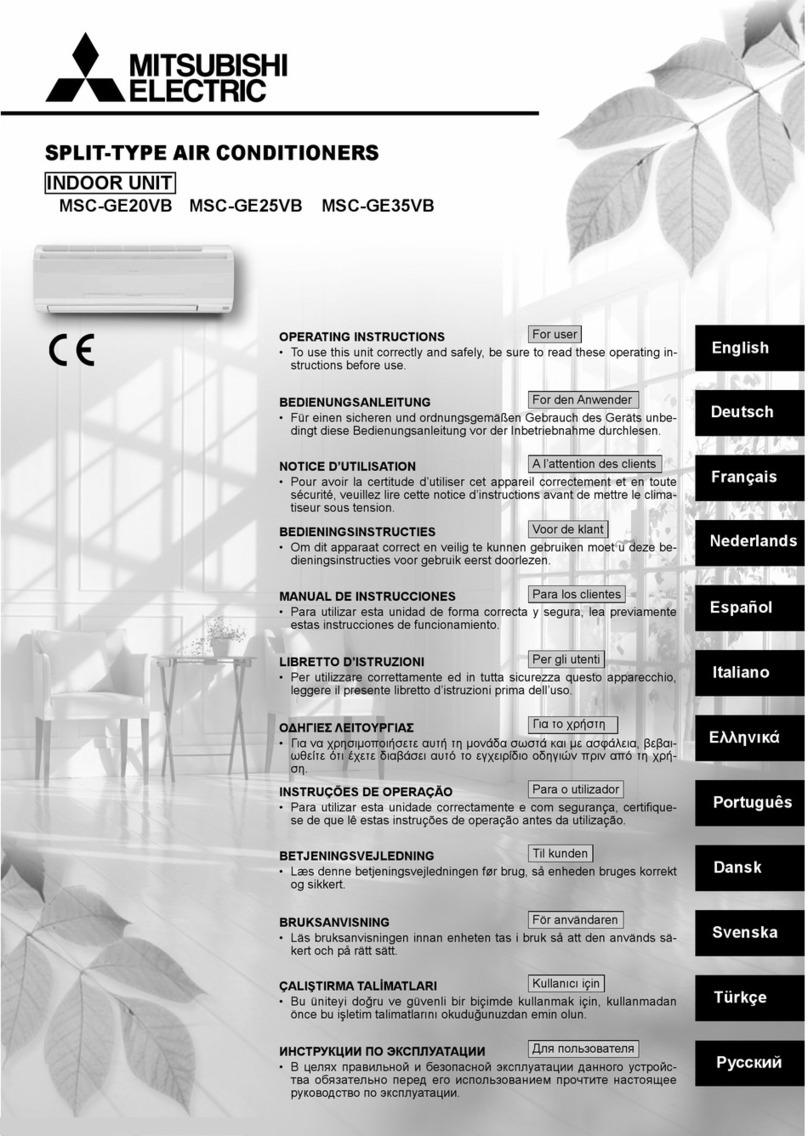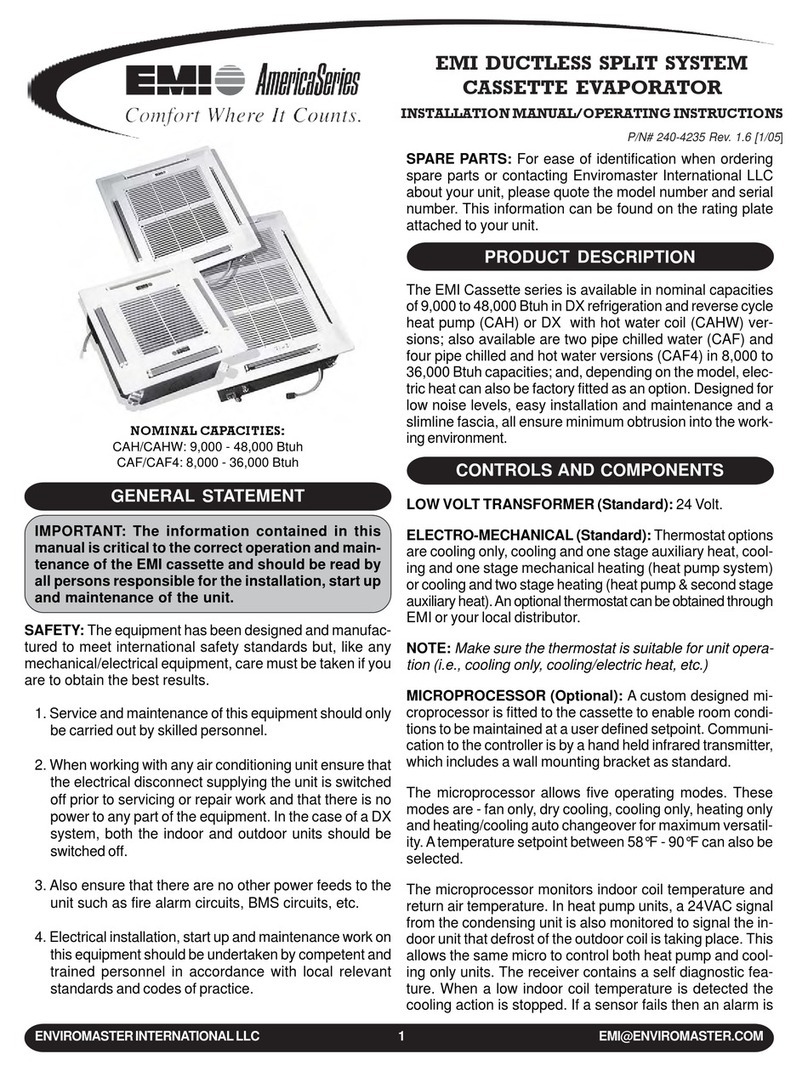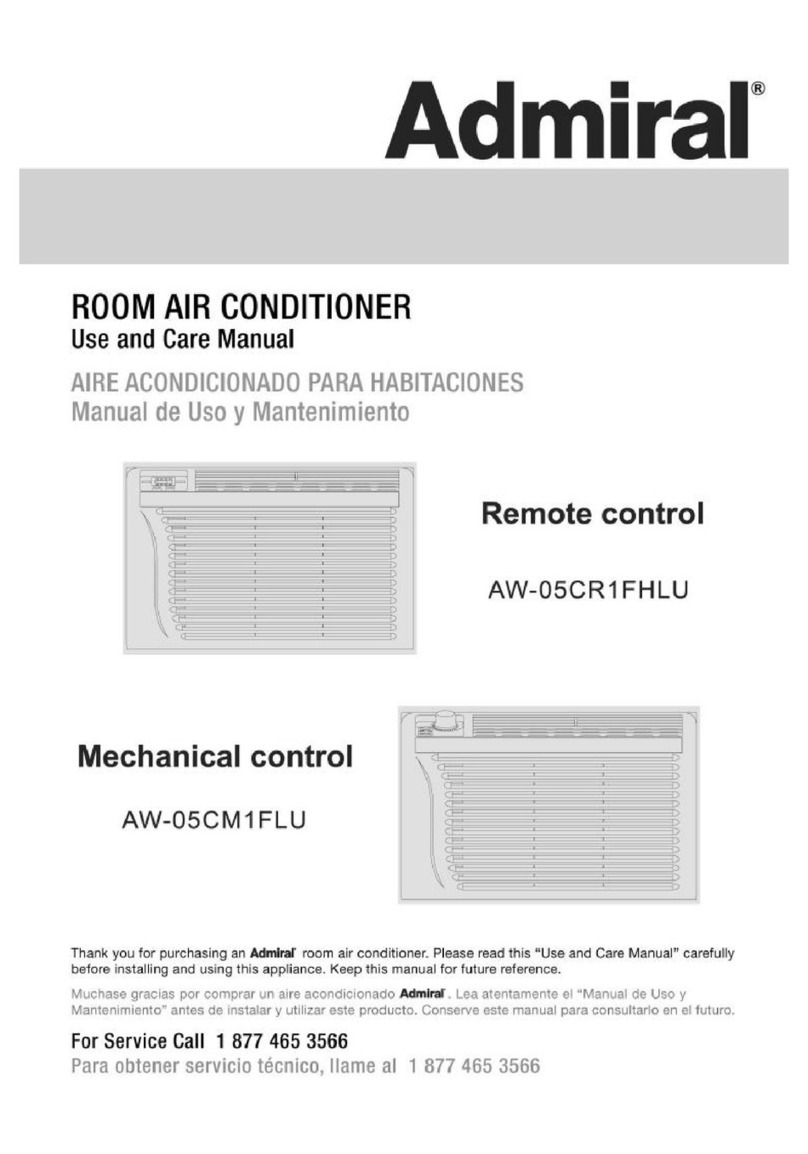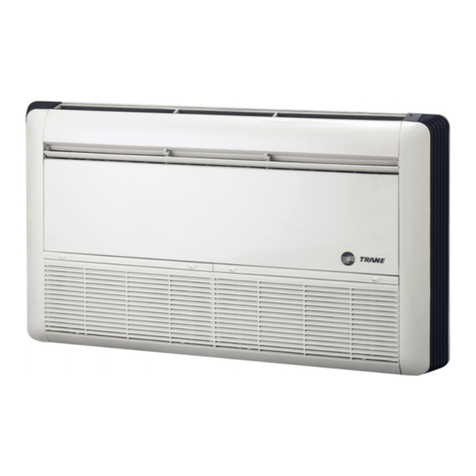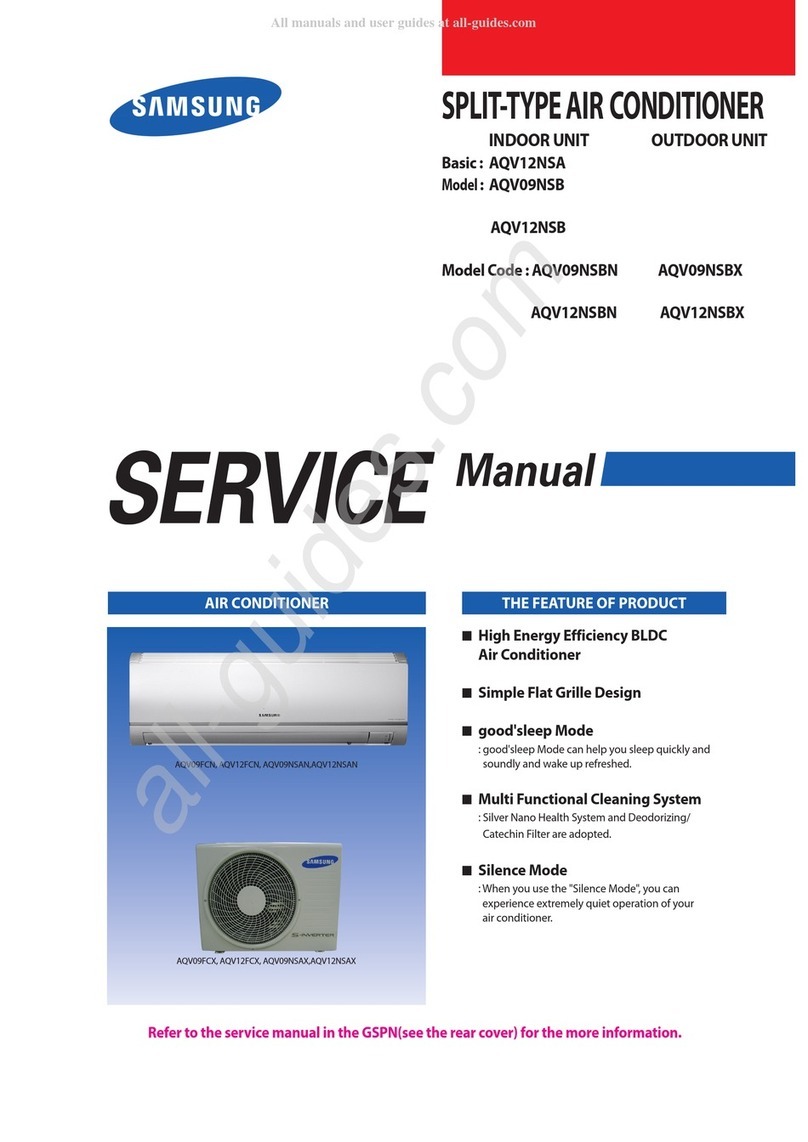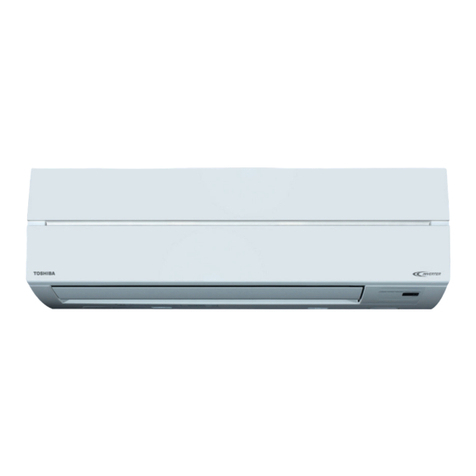Bard W36ABRC User manual

Page 1 of 42
11EER WA Series
Wall Mount Air Conditioner
INSTALLATION INSTRUCTIONS
W18AB-A W24AB-A
W24AB-B
W24AB-C
W24AB-D
W24AB-F
Bard Manufacturing Company, Inc.
Bryan, Ohio 43506
www.bardhvac.com
Manual: 2100-689J
Supersedes: 2100-689I
Date: 5-14-21
W18LB-A W24LB-A
W24LB-B
W24LB-F
W30ABDA
W30ABDB
W30ABDC
W30AB-A
W30AB-B
W30AB-C
W30AB-D
W30AB-F
W36AB-A
W36AB-B
W36AB-C
W36ABRC
W36AB-D
W36AB-E
W36AB-F
W30LB-A
W30LB-B
W30LB-C
W30LB-F
W36LB-A
W36LB-B
W36LB-C
W36LBRC
W36LB-F
W36ABDA
W36ABDB
W36ABDC
Right Hand Models:
Left Hand Models:

Manual 2100-689J
Page 2 of 42
CONTENTS
Getting Other Information and Publications .... 3
Wall Mount General Information ......................... 4
Air Conditioner Wall Mount Model Nomenclature..... 4
Shipping Damage ................................................. 4
General ............................................................... 4
Duct Work ........................................................... 5
Filters ................................................................. 5
Fresh Air Intake ................................................... 5
Installation ............................................................... 6
Basic Installation Design and Application Planning.. 6
Wall Construction ............................................. 6
Outdoor Area Inspection.................................... 6
Condensate Water Drainage ............................... 6
Indoor Ducted and Non-Ducted Applications........... 6
Indoor Supply Airow........................................ 6
Indoor Return Airow........................................ 6
Ducted Applications ......................................... 7
Free Blow Applications...................................... 7
Thermostat or Indoor Temperature Sensor
Placement ....................................................... 7
Unit Installation ................................................... 7
Materials/Tool List ............................................ 7
Wall Preparation ............................................... 8
Wall Mount Installation to Wall Surface .............. 8
Wiring – Main Power........................................... 16
Wiring – Low Voltage........................................... 16
Low Voltage Connections ................................. 16
Unit Shutdown Feature ................................... 16
Balanced ClimateTM Feature............................. 16
Dehumidication Feature ................................ 17
Ventilation Features ........................................ 17
Low Ambient Control (LAC) ............................. 17
Outdoor Temperature Switch and Freeze
Protection Thermostat................................. 17
Alarm Relay Feature ....................................... 17
DDC Controls Feature...................................... 17
Dirty Filter Switch Indicator (DFS) ............... 18
Discharge Air Sensor .................................. 18
Airow Switch............................................ 18
Compressor Current Sensor ......................... 18
Start Up ................................................................... 21
General ............................................................. 21
Topping Off System Charge ................................. 21
Safety Practices ................................................. 21
Important Installer Note...................................... 21
High Pressure Switch.......................................... 21
Three Phase Scroll Compressor Start Up
Information........................................................ 21
Phase Monitor.................................................... 22
Condenser Fan Operation .................................... 22
Service Hints ..................................................... 22
Sequence of Operation........................................ 22
Balanced ClimateTM Mode................................ 22
Vent Connection Plug.......................................... 23
Compressor Control Module................................. 23
Features ........................................................ 23
Delay-on-Make Timer ...................................... 23
Short Cycle/Delay-on-Break ............................. 23
Low Pressure Detection................................... 23
High Pressure Detection.................................. 23
Test Mode...................................................... 23
Brownout Protection with Adjustment............... 23
Pressure Service Ports ........................................ 24
Service ..................................................................... 25
Troubleshooting Nidec SelecTech Series ECM
Motors............................................................... 25
If the Motor is Running ................................... 25
If the Motor is Not Running............................. 25
Model SelecTech Communication Diagnostics ... 26
Fan Blade Setting Dimensions ............................. 27
R-410A Refrigerant Charge ................................. 27
Removal of Fan Shroud....................................... 27
Setting Unit Airow ............................................ 32
Blower Speeds ............................................... 32
Speed Tap 1 – Vent/Blower Only .................. 33
Speed Tap 2 – Balanced Climate ................. 33
Speed Tap 3 – Default LO Cooling &
Heating ............................... 33
Speed Tap 4 – Optional MED Cooling &
Heating ............................... 33
Speed Tap 5 – Optional HI Cooling &
Heating ............................... 33
Dirty Filter Switch .............................................. 34
Dirty Filter Switch Adjustment ......................... 34
FIGURES
Figure 1 Fresh Air Damper .................................. 5
Figure 2 Unit Dimensions ................................. 10
Figure 3A Mounting Instructions –
W18, 24
.......... 11
Figure 3B Mounting Instructions –
W30, 36
............. 12
Figure 4 Electric Heat Clearance ....................... 13
Figure 5 Wall Mounting Instructions .................. 14
Figure 6 Wall Mounting Instructions .................. 14
Figure 7 Common Wall Mounting Installations .... 15
Figure 8 Programmable Thermostat
Connections ....................................... 19
Figure 9 Thermostat Connections ...................... 20
Figure 10
8201-169 Compressor Control Module ...
24
Figure 11 Motor Connections .............................. 25
Figure 12 Motor Connections .............................. 26
Figure 13 Fan Blade Setting ............................... 27
Figure 14 Speed Taps......................................... 32
Figure 15 Speed Taps......................................... 33
Figure 16 Dirty Filter Switch Location.................. 34
Figure 17 Adjusting Dirty Filter Switch................. 35

Manual 2100-689J
Page 3 of 42
GETTING OTHER INFORMATION AND PUBLICATIONS
These publications can help when installing the air
conditioner. They can usually be found at the local
library or purchased directly from the publisher. Be
sure to consult the current edition of each standard.
National Electrical Code ......................ANSI/NFPA 70
Standard for the Installation of Air Conditioning and
Ventilating Systems
.......................................................ANSI/NFPA 90A
Standard for Warm Air Heating and Air Conditioning
Systems
.......................................................ANSI/NFPA 90B
Load Calculation for Winter and Summer Air
Conditioning
....................................... ACCA Manual J Residential
Duct Design for Residential Winter and Summer Air
Conditioning and Equipment Selection
....................................................... ACCA Manual D
For more information, contact these publishers:
ACCA Air Conditioning Contractors of America
1712 New Hampshire Ave. N.W.
Washington, DC 20009
Telephone: (202) 483-9370
Fax: (202) 234-4721
ANSI American National Standards Institute
11 West Street, 13th Floor
New York, NY 10036
Telephone: (212) 642-4900
Fax: (212) 302-1286
ASHRAE American Society of Heating, Refrigeration
and Air Conditioning Engineers, Inc.
1791 Tullie Circle, N.E.
Atlanta, GA 30329-2305
Telephone: (404) 636-8400
Fax: (404) 321-5478
NFPA National Fire Protection Association
Batterymarch Park
P.O. Box 9101
Quincy, MA 02269-9901
Telephone: (800) 344-3555
Fax: (617) 984-7057
TABLES
Table 1 Clearance Required for Service Access
and Adequate Condenser Airow............. 9
Table 2 Minimum Clearances Required to
Combustible Materials ........................... 9
Table 3 Additional Low Voltage Connections
(if applicable) ..................................... 16
Table 4 Low Voltage Connections for
DDC Control ....................................... 18
Table 5 Wall Thermostats ................................ 18
Table 6 Thermostat Wire Size........................... 19
Table 7 Humidity Controls ............................... 19
Table 8 CO2Controllers ................................... 19
Table 9 Fan Blade Dimensions......................... 27
Table 10 Cooling Pressure – Standard Airow ...... 28
Table 11 Cooling Pressure – Balanced Climate
Airow ............................................... 29
Table 12 Electrical Specications W**AB ........... 30
Table 13 Electrical Specications W**LB ........... 31
Table 14 Recommended Airow ......................... 32
Table 15 Blower Speeds for Unit Operational
Modes................................................ 33
Table 16 Indoor Blower Performance .................. 36
Table 17 Maximum ESP Electric Heat Only......... 37
Table 18 Electric Heat ...................................... 37
Table 19 Vent and Control Options ..................... 38
Table 20A Optional Accessories –Right Hand ....... 39
Table 20B Optional Accessories –Left Hand .............40
GRAPHS
Graph 1 W18*B FAD-NE2, 3 W/O Exhaust
Ventilation Delivery ............................. 41
Graph 2 W24*B FAD-NE2, 3 W/O Exhaust
Ventilation Delivery ............................. 41
Graph 3 W30*B FAD-NE2, 3 W/O Exhaust
Ventilation Delivery ............................. 42
Graph 4 W36*B FAD-NE2, 3 W/O Exhaust
Ventilation Delivery ............................. 42

Manual 2100-689J
Page 4 of 42
WALL MOUNT GENERAL INFORMATION
AIR CONDITIONER WALL MOUNT MODEL NOMENCLATURE
NOTE: Vent options X and B are without exhaust capability. May require separate field-supplied
barometric relief in building.
Shipping Damage
Upon receipt of equipment, the carton should be
checked for external signs of shipping damage. If
damage is found, the receiving party must contact
the last carrier immediately, preferably in writing,
requesting inspection by the carrier’s agent.
General
The equipment covered in this manual is to be installed
by trained, experienced service and installation
technicians.
This appliance is not intended for use by persons
(including children) with reduced physical, sensory
or mental capabilities, or lack of experience and
knowledge, unless they have been given supervision or
instruction concerning use of the appliance by a person
responsible for their safety.
Children should be supervised to ensure that they do
not play with the appliance.
The refrigerant system is completely assembled and
charged. All internal wiring is complete.
The unit is designed for use with or without duct work.
Flanges are provided for attaching the supply and
return ducts.
These instructions explain the recommended method
to install the air cooled self-contained unit and the
electrical wiring connections to the unit.
These instructions and any instructions packaged with
any separate equipment required to make up the entire
air conditioning system should be carefully read before
beginning the installation. Note particularly “Starting
Procedure” and any tags and/or labels attached to the
equipment.
While these instructions are intended as a general
recommended guide, they do not supersede any
national and/or local codes in any way. Authorities
having jurisdiction should be consulted before the
installation is made. See page 3 for information on
codes and standards.
Size of unit for a proposed installation should be based
on heat loss calculation made according to methods of
Air Conditioning Contractors of America (ACCA). The
air duct should be installed in accordance with the
CONTROL MODULES
(See Spec. Sheet S3573)
COIL OPTIONS
X – Standard
1 – Phenolic Coated Evaporator
2 – Phenolic Coated Condenser
3 – Phenolic Coated Evaporator
and Condenser
Insert “D” for dehumidication with hot gas reheat. Reference Form 7960-811 for complete details. Insert "R" for units with isolation
transformer for high resistance ground applications.
SPECIALTY PRODUCTS
(Non-Standard)
W 36 A B –A 0Z X X X X X X
MODEL SERIES
REVISION
KW
A – Right Hand
L – Left Hand
FILTER OPTIONS
X – 1" Throwaway (Standard) N – 2" MERV 13
W – 1" Washable B – NPBI TECH + 2" MERV 13
P – 2" Pleated A – UV-C + 2" MERV 13
M – 2" MERV 11
PLACEHOLDER
X – Future Use
COLOR OPTIONS
X – Beige (Standard)
1 – White
4 – Buckeye Gray
5 – Desert Brown
8 – Dark Bronze
A – Aluminum
S – Stainless Steel
CAPACITY
18 – 1½ Ton
24 – 2 Ton
30 – 2½ Ton
36 – 3 Ton
VENTILATION OPTIONS
X – Fresh Air Damper - No Exhaust (Standard)
A – Fresh Air Damper - With Barometric Exhaust
B – Blank-off Plate
D – DDC, 0-10V Economizer
M – Commercial Ventilator - ON/OFF Operation Only
R – Energy Recovery Ventilator - Motorized with Exhaust
S – Economizer - Standard Partial Flow Version without Hood
V – Commercial Ventilator - No Hood with Exhaust
Y – Economizer - DB Full Flow
Z – Economizer - DB & WB, Full Flow
A – 230/208/60/1
B – 230/208/60/3
C – 460/60/3
D – 240/220/50/1
VOLTS & PHASE
E – 240/220/50/3
or 220/200/50/3
F – 415/380/50/3

Manual 2100-689J
Page 5 of 42
Filters
A 1" throwaway lter is standard with each unit. The
lter slides into position making it easy to service. This
lter can be serviced from the outside by removing the
lter access panel. Additional 1" and 2" lters are also
available as optional accessories. The internal lter
brackets are adjustable to accommodate the 2" lter
by bending two tabs down on each side of the lter
support bracket.
Fresh Air Intake
All units are built with fresh air inlet slots punched in
the service door.
If the unit is equipped with a fresh air damper
assembly, the assembly is shipped already attached
to the unit. The damper blade is locked in the closed
position. To allow the damper to operate, the maximum
and minimum blade position stops must be installed
(see Figure 1).
Graphs found on pages 41 and 42 give approximate
fresh air amounts based on the blade position stop
location.
All capacity, efciency and cost of operation
information is based upon the fresh air blank-off plate
in place and is recommended for maximum energy
efciency.
The blank-off plate is available upon request from the
factory and is installed in place of the fresh air damper
shipped with each unit.
Standards of the National Fire Protection Association
for the Installation of Air Conditioning and Ventilating
Systems of Other Than Residence Type, NFPA No.
90A, and Residence Type Warm Air Heating and Air
Conditioning Systems, NFPA No. 90B. Where local
regulations are at a variance with instructions, installer
should adhere to local codes.
Duct Work
All duct work, supply and return, must be properly
sized for the design airow requirement of the
equipment. Air Conditioning Contractors of America
(ACCA) is an excellent guide to proper sizing. All duct
work or portions thereof not in the conditioned space
should be properly insulated in order to both conserve
energy and prevent condensation or moisture damage.
Refer to Maximum ESP of Operation Electric Heat
Table 17 on page 37.
Design the duct work according to methods given by
the Air Conditioning Contractors of America (ACCA).
When duct runs through unheated spaces, it should
be insulated with a minimum of 1" of insulation. Use
insulation with a vapor barrier on the outside of the
insulation. Flexible joints should be used to connect the
duct work to the equipment in order to keep the noise
transmission to a minimum.
Model series W18 and W24 are approved for 0"
clearance to the supply duct. For model series W30
and W36, a 1/4" clearance to combustible material
for the rst 3' of duct attached to the outlet air frame
is required. See wall mount installation instructions
beginning on page 6 and Figures 3 − 7 (pages 11 – 15)
for further details.
Ducts through the walls must be insulated and all joints
taped or sealed to prevent air or moisture entering the
wall cavity.
Some installations may not require a return air duct. A
metallic return air grille is required with installations
not requiring a return air duct. The spacing between
louvers on the grille shall not be larger than 5/8".
Any grille that meets with 5/8" louver criteria may
be used. It is recommended that Bard Return Air
Grille Kits RG2 through RG3 or RFG2 through RFG3
be installed when no return duct is used. Contact
distributor or factory for ordering information. If using a
return air lter grille, lters must be of sufcient size to
allow a maximum velocity of 400 fpm.
NOTE: If no return air duct is used, applicable
installation codes may limit this cabinet to
installation only in a single story structure.
FIGURE 1
Fresh Air Damper
MIS-3973
INSTALL STOPS HERE

Manual 2100-689J
Page 6 of 42
INSTALLATION
Basic Installation Design and
Application Planning
Successful unit installations require proper planning
and site inspection before installation begins. Before
installing the wall mount unit, make sure that all
service and airow clearances are met and that the
unit can meet all applicable code and regulation
requirements. Provide an inspection of both the inside
and outside of the structure by reviewing oorplans
and/or visiting the installation site.
Wall Construction
The wall must be inspected to ensure that the weight
of the unit can be supported. Be sure to review all
applicable construction codes and regulations including
seismic requirements. When inspecting wood frame
walls, the wall construction must be strong and
rigid enough to carry the weight of the unit without
transmitting any unit vibration. It is important that
the side unit wall mounting lags and optional bottom
bracket are supported by structural members inside
the wall cavity. Concrete block and brick walls must be
thoroughly inspected to ensure that they are capable of
carrying the weight of the installed unit. Metal buildings
must contain structural components to support the unit
weight. If heavily corrugated siding is present, it may
need to be trimmed and ashed similar to a window
to provide a at, even surface to attach and seal the
unit to the wall. Heavy gauge corrugations that would
be present on shipping containers and blast-proof
structures may require the installation of a metal plate
over the corrugated area. It is important that the unit
area is weatherized and sealed to avoid air and water
inltration into the area between the unit and the wall.
Outdoor Area Inspection
Inspect the outdoor area of the jobsite or review
construction plans and locate the area where the wall
mount is to be installed. The outdoor area must be
free from obstructions including fences, bushes and
walls that will hinder unit operation regarding outdoor
condenser airow and unit serviceability. Do not
install units in enclosed areas that limit the amount
of ambient temperature airow. Warm air will exit
the front condenser section of the unit, and outdoor
ambient temperature air must be able to enter side
intake condenser openings of the unit. Portable or
modular building placement must be in a way that the
wall mount units have a constant supply of outdoor air
for proper unit operation. Make sure that the service
panels of the unit are accessible. Inspect wall surfaces
for obstructions that could hinder unit installation
and servicing including outdoor electrical conduits,
junction boxes, wall drains, vent hoods, windows, doors,
overhangs and posts.
Condensate Water Drainage
Review all codes and requirements for unit condensate
drainage. A clear, exible PVC drain hose (3/4" ID, 1"
OD) extends from the drain pan in the upper section of
the unit and extends down to the unit base. An opening
is supplied towards the back of the unit base for the
drain hose to pass through, and the hose extends 1"
to 2" below the unit base. Water removed from the
indoor air (condensate) will be expelled from the unit
in large amounts during cooling operation through the
hose. Units running in cooling operation in cold outdoor
below freezing conditions can cause the condensate
to freeze after leaving the drain hose. In the event the
drain hose is connected to a drain system of some type,
it must be an open or vented type system to ensure
proper drainage throughout seasonal use.
Indoor Ducted and Non-Ducted
Applications
Air distribution inside the structure being conditioned
plays an important role in making sure the area is
a consistent temperature. Improper air distribution
can result in areas being cooler or warmer, electrical
equipment not receiving sufcient airow or occupancy
discomfort felt inside an area. Thermostat or indoor
temperature sensor placement inside the area being
conditioned also plays an important role in indoor
climate control.
Indoor Supply Airow
Indoor installation areas must provide a non-restrictive
path for the conditioned supply air to leave supply
grilles and registers. Inspect the area to ensure that all
indoor portions of the room or rooms will have access
to supply air. Ductwork may be used to ensure proper
air circulation and all provided ductwork guidelines and
clearances must be followed. Non-ducted applications
must use a supply louver grille installed over the supply
opening inside the room. Be sure to adjust supply
deectors to properly disperse the conditioned supply
air to all parts of the room. Avoid closing sections of
the supply grilles which would cause unneeded supply
duct pressurization.
Indoor Return Airow
A non-restrictive path for room air returning to the
center section of the unit must be provided inside
the room. Avoid placing objects including furniture,
electronics equipment, equipment racks and cabinets
directly in front of the unit return grilles and registers.
Bard recommends at least 2' between solid objects
and return grilles or registers. Ductwork may be used to
ensure proper air circulation and all provided ductwork
guidelines and clearances must be followed. Non-
ducted applications must use a return louver grille
installed over the return opening inside the room.

Manual 2100-689J
Page 7 of 42
Ducted Applications
Field fabricated supply and return duct work may be
installed inside the structure being conditioned. A short
supply and/or return stub duct may be connected to the
unit supply and return anges before unit installation to
help with duct connections inside the structure. Supply
and return ducts must be properly sized for the design
airow requirement of the equipment. Air Conditioning
Contractors of America (ACCA) is an excellent guide
to proper sizing. All duct work or portions thereof not
in the conditioned space should be properly insulated
in order to conserve energy, reduce heat conductivity,
and prevent condensation or moisture damage. Refer to
Maximum External Static Pressure (ESP) of Operation
Table 17 on page 37. Design the duct work according
to methods given by the Air Conditioning Contractors
of America (ACCA). When duct work is installed
in unheated spaces, it should be insulated with a
minimum of 1" of insulation. Use insulation with a
vapor barrier on the outside of the insulation. Flexible
joints should be used to connect the duct work to the
equipment in order to keep the noise transmission to a
minimum. Ducts through the walls must be insulated
and all joints taped or sealed to prevent air or moisture
from entering the wall cavity.
Model series W18 and W24 are approved for 0"
clearance to the supply duct. For model series W30
and W36, a 1/4" clearance to combustible material for
the rst 3' of duct attached to the outlet air frame is
required. See instructions on page 8 and Figures 3 − 7
(pages 11 – 15) for further details.
A non-restrictive metallic supply air grille with
deectors is required for free blow applications. Contact
the local Bard distributor or visit www.bardhvac.com for
ordering information.
A metallic return air grille is required for non-ducted
applications. The spacing between louvers on the grille
shall not be larger than 5/8". It is recommended that a
Bard Return Air Grille Kit is installed that is designed
specically for the wall mount product. Contact the
local Bard distributor or visit www.bardhvac.com for
ordering information. A eld-supplied return grille
that meets the 5/8" louver criteria and does not cause
the unit to exceed the maximum specied external
static pressure (ESP) may be used. If using a return
air lter grille, lters must be of sufcient size to
allow a maximum velocity of 400 fpm. Filter return
air grilles do not lter air being brought into the
structure through ventilation options including fresh air
dampers, ventilators, economizers and energy recovery
ventilators. Be sure to install the return grille with the
louvers pointed downward towards the oor. This will
help ensure return air is drawn upward from the oor
and improve air circulation in the room.
NOTE: If no return air duct is used, applicable
installation codes may limit this cabinet to
installation only in a single story structure.
Thermostat or Indoor Temperature Sensor Placement
The location and installation of the thermostat or
temperature sensor that monitors indoor temperature is
very important regarding unit operation. Avoid placing
the thermostat in an area exposed to direct sunlight
or air from doorways leading outdoors. Use a piece
of insulating material to close off conduit openings
or holes in the wall surface for wire entry into the
thermostat or temperature sensor. This will help avoid
non-conditioned air from entering the thermostat
and effecting temperature and/or humidity readings.
As common practice, the thermostat or temperature
sensor should measure the temperature of the air
being returned to the unit, and not the conditioned
air being supplied by the unit. Placing the thermostat
or temperature sensor near a return air opening will
normally result in optimal unit performance.
Unit Installation
Make sure to have the proper tools at the work site that
are needed for unit installation. The following steps
are provided to ensure the unit is installed properly to
the wall surface, and that the unit will provide years of
service with minimal service requirements.
Materials/Tools List
Additional hardware and miscellaneous supplies are
needed for installation. These items are eld supplied
and must be sourced before installation. The following
list also includes tools needed for installation.
Fire hazard.
Maintain minimum 1/4" clearance between the
supply air duct and combustible materials in
the rst 3' of ducting.
Failure to do so could result in re causing
damage, injury or death.
!WARNING
Free Blow Applications
Some installations may not require extensive supply
duct work throughout the structure and are referred
to as free blow applications. A short eld-fabricated
supply duct must be used in the wall cavity to
transition between the supply collar on the unit and
the supply louver grille in the room. The duct must
be properly insulated in order to conserve energy,
reduce heat conductivity and prevent condensation or
moisture damage. All joints must be taped or sealed to
prevent air or moisture entering the wall cavity. Follow
all clearances including distances to combustible
materials and all instructions provided in this manual.

Manual 2100-689J
Page 8 of 42
• Appropriate safety gear including gloves and safety
glasses
• 5/16" hex bit with drill driver
• Phillips head screwdriver
• Small straight (thermostat) screwdriver
• Tape measure
• Leveling device
• Two (2) tubes of caulk and caulk gun
• Utility knife
• Tools for cutting holes in the wall surface (if
needed)
• Electrical components and wiring along with
electrical tools
• Multimeter
• Wall fasteners for side anges, bottom mounting
bracket and top rain ashing.
• Duct tape and/or other duct sealing materials.
Wall Preparation
1. Two holes for the supply and return air openings
must be cut through the wall as shown in
Figures 3A and 3B on pages 11 and 12. Be sure
the openings are square and level. Follow all
clearances including distances to combustible
materials and all instructions provided in this
manual.
2. Review all electrical requirements provided in this
manual and plan out electrical entrances into the
building. Also plan electrical conduit routing and
thermostat placement, if necessary.
3. Install necessary duct work and prepare the
openings for unit installation.
4. Clean the exterior wall where the unit is to be
installed and make sure it is able to provide a
smooth, level, debris-free surface. Remove all
construction debris from the supply, return and
electrical hole cutting process.
Wall Mount Installation to Wall Surface
1. Remove packaging from unit and make sure the
unit is not damaged before installation. A top rain
ashing is supplied for eld use and is mounted to
the back of the unit for shipping. Remove the rain
ashing before locating the unit against the wall.
Top rain ashing is required to avoid water entering
the area behind the unit that is against the wall. A
bottom mounting bracket, attached to the skid for
shipping, is provided for ease of installation but
is not required. Review all requirements listed on
unit labels and on serial plate located on the side
of the unit.
2. Locate and mark bolt hole locations and bottom
mounting bracket location. Install bottom
mounting bracket with eld-supplied fasteners to
wall if it is to be used (optional). Bracket must be
level and installed in the correct location to help
support the unit during the installation process
(see Figures 3A and 3B).
3. Position the wall mount unit close to the wall
surface where it will be installed. Install rain
ashing at the top of the unit facing the wall by
hooking the hem bend into the rear bend of the
unit top (see Figures 3A and 3B).
4. Apply a liberal amount of caulk on left and right
cabinet side wall mount brackets and back of
top rain ashing. Place unit back surface ush
against wall. Unit must be level to ensure proper
condensate drainage. Optional bottom bracket may
be used to help support the unit.
5. Units are secured to the wall by using eld-
supplied fasteners along each side of the wall
mount through the built-in wall mounting brackets.
It is the responsibility of the installer to select
the proper fastener to secure the unit to the wall
based on wall construction and applicable building
codes. Typical installations may include 5/16"
fasteners with 7/8" diameter at washers. Be sure
unit is securely mounted and all weight-bearing
fasteners are attached to the weight supporting
structural members of the wall.
6. Apply a bead of caulk between the back of the unit
top and the front surface of the top rain ashing
(see Figures 3A and 3B).
7. Connect unit duct work from the inside of the
building following all clearances and instructions
provided. For additional mounting rigidity, the
return air and supply air frames or collars can be
drilled and screwed or welded to the structural wall
itself (depending upon wall construction). Be sure
to use code approved duct tape or other sealing
materials to seal the duct work to the unit.
8. On side-by-side installations, maintain a minimum
of 20" clearance on right side (on W**A units) to
allow access to control panel and heat strips and
proper airow to the outdoor coil (20" clearance on
left side on W**L units). Additional clearance may
be required to meet local or national codes.

Manual 2100-689J
Page 9 of 42
NOTE: For side-by-side installation of two W**A
models, there must be 20" between units. This
can be reduced to 15" by using a W**L model
(left side compressor and controls) for the left
unit and W**A (right side compressor and
controls) for right unit.
See Specications Sheet S3573.
TABLE 1
Clearance Required for Service Access and
Adequate Condenser Airow
Model Left
Side
Right
Side
Discharge
Side
W18A
W24A
W30A
W36A
15" 20" 10'
W18L
W24L
W30L
W36L
20" 15" 10'
TABLE 2
Minimum Clearances Required
to Combustible Materials
Model Supply Air Duct (1st 3') Cabinet
W18A, L
W24A, L 0" 0"
W30A, L
W36A, L 1/4" 0"

Manual 2100-689J
Page 10 of 42
FIGURE 2
Unit Dimensions
Width
(W)
Depth
(D)
Height
(H)
Supply Return
A B C B E F G I J K L M N O P Q R S T
W18*B
W24*B 33.300 17.125 74.563 7.88 19.88 11.88 19.88 35.00 10.88 29.75 20.56 30.75 32.06 33.25 31.00 2.63 34.13 26.06 10.55 3.94 12.00 9.00
W30*B
W36*B 38.200 17.125 74.563 7.88 27.88 13.88 27.88 40.00 10.88 29.75 17.93 30.75 32.75 33.25 31.00 2.75 39.13 26.75 9.14 3.94 12.00 9.00
All dimensions are in inches. Dimensional drawings are not to scale.
W**A*
RIGHT
UNIT
W**L*
LEFT
UNIT
3"
4° Pitch
Cond.
Built In
Rain Hood
Inlet
Air
Panel
Access
Heater
Side View
Electrical
Drain
(Lockable)
Access Panel
Disconnect
Entrance
Electrical
Low Voltage
Entrance
C. Breaker/
High Voltage
Hood for ERV
models only
1.250
D
J
CH
2.13
A
I
K
7.00
Hood for full flow
ECON models only
Optional
Electrical
Entrances
Side Wall Supply Air Opening
Shipping
Location
Brackets
Return Air Opening
(Built In)
Mounting
Top Rain
Flashing
Bottom Installation
Bracket
Back View
.44
O
E
R
S
S
S
S
S
T
N
B
P
M
L
QMIS-3976 A
Electric
Heat
Front View
Air Outlet
Condenser
Filter Access Panel Standard
flush vent
door for non-
ERV
Econ.
models
1
Ventilation Air
F
W
5.88
G
1.250
I
A
C
K
2.13
H
J
N
Q
PML
O
E
.44 W
5.88
F
G
R
S
S
S
S
S
T
D
B
3"
1
Supply Air Opening
Entrances
Electrical
Drain
Inlet
Air Air Outlet
Front ViewSide View
Cond.
Bottom Back View
Condenser
Filter Access Panel
Optional
Ventilation Air
(Built In)
Brackets
Mounting
Side Wall
Location
Shipping
Flashing
Bracket
Return Air Opening
Installation Entrance
Electrical
High Voltage
Entrance
Electrical
Low Voltage
Top Rain Econ. models
non-ERV
ventdoor for
Standard flush
(Lockable)
Access Panel
Heat
Electric
Disconnect
Panel
Access
Heater
C. Breaker/
Built In
Rain Hood
4° Pitch
MIS-3972 A
7.000
Hood for full flow
ECON models
only
Hood for
ERV models
only

Manual 2100-689J
Page 11 of 42
FIGURE 3A
W18AB, W18LB, W24AB, W24LB
Mounting Instructions
9"
12"
12"
12"
12"
20"
20"
8"
71
16"32
12"
2"
2"
71
16"
"
12"
5"
1"
3"
4"
Typ.
31
8"
4"
Typ.
7
8"
1
"201
2
CONTROLS AND HEATER ACCESS
THE SIDE MOUNTING FLANGES AND UNDER
SILICONE CAULKING BE PLACED BEHIND
TOP FLASHING AT TIME OF INSTALLATION.
OPENING
Wall Opening and Hole Location View
ENTIRE LENGTH OF TOP.
RETURN AIR
DUCT
Right Side View
NOTES:
OF CAULKING ALONG
PANEL
FOAM AIR SEAL
WALL STRUCTURE
WALL
HEATER ACCESS
RAIN FLASHING
TOP
IS ON OPPOSITE (LEFT) SIDE.
SEAL WITH BEAD
IT IS RECOMMENDED THAT A BEAD OF
W**A UNIT SHOWN, W**LUNIT
SUPPLY AIR
SUPPLIED
Return Opening
Supply Opening
MIS-4036 A

Manual 2100-689J
Page 12 of 42
FIGURE 3B
W30AB, W30LB, W36AB, W36LB
Mounting Instructions
28"
A
C
D
C
12"
12"
12"
12"
12"
B
E
14"
411
16"411
16"
4"
Typ.
27
8"
7
8"7
8"
4"
Typ.
31
8"
9 1
16"
47
8"NOTES:
Right Side View
PANEL
ENTIRE LENGTH OF TOP.
TOP
OF CAULKING ALONG
HEATER ACCESS
1/4" CLEARANCE ON ALL
FOAM AIR SEAL
WALL STRUCTURE
SUPPLIED
AIR DUCT IS REQUIRED
SUPPLY AIR
FOUR SIDES OF SUPPLY
MATERIALS
FROM COMBUSTABLE
RAIN FLASHING
W**A UNIT SHOWN, W**LUNIT
TOP FLASHING AT TIME OF INSTALLATION.
THE SIDE MOUNTING FLANGES AND UNDER
SILICONE CAULKING BE PLACED BEHIND
IS ON OPPOSITE (LEFT) SIDE.
OPENING
CONTROLS AND HEATER ACCESS
DUCT
RETURN AIR
SEAL WITH BEAD
IT IS RECOMMENDED THAT A BEAD OF
WALL
Wall Opening and Hole Location View
REQUIRED DIMENSIONS TO MAINTAIN
1/4" MIN. CLEARANCE FROM
16 7/84 5/89 7/8
Return Opening
29 7/8
17 5/85 3/88 3/8
28 3/8
EDCBA
COMBUSTIBLE MATERIALS
RECOMMENDED 1" CLEARANCE FROM
REQUIRED DIMENSIONS TO MAINTAIN
COMBUSTIBLE MATERIALS
Supply Opening
MIS-3820 A
3 3/4
4 1/2

Manual 2100-689J
Page 13 of 42
FIGURE 4
Electric Heat Clearance
W30AB, W30LB, W36AB, W36LB
NOTE 1: SIDE SECTION VIEW OF SUPPLY AIR
DUCT FOR WALL MOUNTED UNIT SHOWING 1/4"
CLEARANCE TO COMBUSTIBLE SURFACES.
Fire hazard.
Maintain minimum 1/4" clearance between the
supply air duct and combustible materials in
the rst 3' of ducting.
Failure to do so could result in re causing
damage, injury or death.
!WARNING

Manual 2100-689J
Page 14 of 42
FIGURE 5
Wall Mounting Instructions
FIGURE 6
Wall Mounting Instructions
DUCT
OPENING
RETURN AIR
SUPPLY AIR
WOOD FRAME WALL INSTALLATION
OPENING
WALL BEFORE
MOUNT ON UNIT
OPENING
BEFORE INSTALLATION
BOTTOM MOUNTING
CONCRETE BLOCK WALL INSTALLATION
BRACKET. MOUNT ON
OPENING
WOOD OR STEELSIDING
OPENING
INSTALLING UNIT.
RETURN AIR
WALL STRUCTURE
RETURN AIR
SUPPLY AIR
FACTORY SUPPLIED
RAIN FLASHING.
SUPPLY AIR
MIS-548 A
SIDE VIEW
I
A
C
K
E + 1.000
B
1.000
SUPPLY DUCT
OVER FRAME
INTERIOR FINISHED WALL
ALL AROUND DUCT
FRAMING MATERIAL
EXTERIOR FINISH WALL
OPENING
FOR ACTUAL DIMENSIONS.
2 x 4'S, 2 x 6'S &/OR
STRUCTURAL STEEL
ATTACH TO TOP
1.000" CLEARANCE
1.000" CLEARANCE
PLATE OF WALL
C
SEE UNIT DIMENSIONS, FIGURE 2,
OPENING
RETURN DUCT
2 x 6
ATTACH TO BOTTOM
OVER FRAME
PLATE OF WALL
L
THIS STRUCTURAL MEMBER
LOCATED TO MATCH STUD
SPACING FOR REST OF WALL.
A SECOND MEMBER MAY BE
REQUIRED FOR SOME WALLS.
MIS-549 B
ALL AROUND DUCT
See Figures 3A and 3B Mounting Instructions

Manual 2100-689J
Page 15 of 42
FIGURE 7
Common Wall Mounting Installations
SupplyAir
RoomAir
ReturnAir
ReturnAir
RoomAir
SupplyAir Duct
Supply Air
Supply Air
ReturnAir
SupplyAir
RoomAir
Supply Air
Supply Air
SupplyAir Duct
RoomAir
ReturnAir
throughout a single area or multiple areas. The supply air mixes
MIS-550 D
Non-Ducted Installations
Outside Wall
Adjustable SupplyGrille
Ceiling
with the room air and cools or heatsoccupantsand/or equipment.
Unconditioned room air is returned to the unit through a return
wall.
Fixed Blade Return Grille
sealed to
Unit is
conditioned. The supply air mixes with the room air and coolsor
Indoor AreaIndoor Area
Indoor Area
Ceiling
Ceiling
plenum when installing the product.
the outer wall surface. Wall curb use may avoid resizing supply
supply air leaving supplygrille and re-entering the unit return
room air isreturned to the unit through the return grille.Avoid
heats occupants and/or equipment in the area.Unconditioned
Non-ducted installationssupply conditioned air into indoor room
directed byadjusting the 4-waysupply grille to reach areas being
areas without extensive duct work.The supplyairstream is
grille without mixing with room air.
selecta curb that will meetthe application requirements and also
static pressure requirementsprovided in thismanual.
provide the best unit performance and efficiency.Review duct
grille or return duct work. Avoid using restrictive duct work to
Unit
Mount Return Grille
Fixed Blade
Wall
wall.
Outside Wall
Ducted Installations
Adjustable Supply Grille
Outdoor Wall Curb Installations
sealed to
Unit
Ducted installationssupply conditioned air into indoor room areas
Optional Dropped Ceiling
sealed to
Wall
WAPR11
provided with the wall curb when installing the product.
be exceeded when using a wall curb. Follow all instructions
be the correct size for the unit. Unit duct static requirements cannot
Unit Fixed Blade Return Grille
Mount
Wall
wall. Ceiling
Curb is
Outside Wall
Unit is
Wall
Mount
using solid or flexible ducts. The supply air is distributed
curb.
Optional Dropped Ceiling
reduction.Variouscurb optionsare available,and it isimportant to
Outside Wall
sealed to
Unit is
wall.
sealed to
Unit is
Unit
Mount
WAPR11 Indoor Sound Plenum Installations
curbs mayalso provide sound isolation and indoor area sound
and return openings thatare currently in an existing wall.Wall
Plenum
Outdoor Wall curbsare installed between the wall mountunit and Indoor sound plenumsare installed inside the room over the unit
return air opening.Plenum use can provide sound isolation and
indoor area sound reduction. The WAPR11 sound plenum
provides a single solution for all unit tonnage sizes. The
WAPR11 maybe installed horizontallyor vertically in the room.
Unit duct staticrequirements cannot be exceeded when using a
sound plenum.Follow all instructions provided with the sound
Indoor Area
Wall Curb

Manual 2100-689J
Page 16 of 42
Wiring – Main Power opening under the disconnect access panel straight
out. This tab will now line up with the slot in the door.
When shut, a padlock may be placed through the hole
in the tab preventing entry.
See “Start Up” section for important information on
three phase scroll compressor start ups.
See Tables 12 and 13 on pages 30 and 31 for
electrical specications.
Wiring – Low Voltage
All 230/208V 1 phase and 3 phase equipment have
dual primary voltage transformers. All equipment leaves
the factory wired on 240V tap. For 208V operation,
reconnect from 240V to 208V tap. The acceptable
operating voltage range for the 240 and 208V taps are:
Tap: 240 Range: 253 – 216
Tap: 208 Range: 220 – 187
NOTE: The voltage should be measured at the field
power connection point in the unit and while
the unit is operating at full load (maximum
amperage operating condition).
For low voltage wiring, an 18 gauge copper, color-coded
cable is recommended. See Table 6 on page 19 for
more information.
Low Voltage (24VAC) Connections
These units use a 24-volt AC low voltage circuit.
Cterminal is the 24VAC common and is grounded.
Gterminal is the indoor blower input.
Y1 terminal is the 1st Stage input for cooling.
Y2 terminal is the 2nd Stage compressor input for
cooling (if equipped with an economizer) or Y2 disables
Balanced Climate mode if the Y1-Y2 jumper is removed
(see page 22).
B/W1 terminal is the 1st stage electric heat.
W2 terminal is the 2nd stage heat (if equipped).
Aterminal is the ventilation input. This terminal
energizes any factory-installed ventilation option and
indoor blower.
Dterminal is the dehumidification input. If installed, this
terminal energizes any factory-installed dehumidication
option.
Lterminal is 24 volt alarm active output.
For units equipped with an alarm relay:
1 terminal is the normally closed contact on the relay.
2 terminal is the normally open contact on the rel
ay.
3 terminal is the common contact on the relay.
See Table 3 for additional low voltage connections on
auxiliary terminal strip.
Main electrical power must be supplied to the unit
from a clean, reliable power source. Verify voltage being
supplied to the unit is consistent during all times of the
day and within the range specied for the unit in the
unit specications and on the unit serial plate. Voltage
must be measured at the eld power connection point
in the unit and while the unit is operating at full load
(maximum amperage operating condition).
NOTE: In applications where a field-supplied
transformer is used to step down a higher
incoming voltage, the center leg must be
grounded when high resistance grounding is
used.
Refer to the unit rating plate for wire sizing information
and maximum fuse or circuit breaker size. Each
outdoor unit is marked with a “Minimum Circuit
Ampacity”. This means that the eld wiring used must
be sized to carry that amount of current. Depending
on the installed KW of electric heat, there may be two
eld power circuits required. If this is the case, the
unit serial plate will so indicate. All models are suitable
only for connection with copper wire. Each unit and/or
wiring diagram will be marked “Use Copper Conductors
Only”. These instructions must be adhered to. Refer
to the National Electrical Code (NEC) for complete
current carrying capacity data on the various insulation
grades of wiring material. All wiring must conform to
NEC and all local codes.
The electrical data lists fuse and wire sizes (75°C
copper) for all models including the most commonly used
heater sizes. Also shown are the number of eld power
circuits required for the various models with heaters.
The unit rating plate lists a “Maximum Time Delay
Relay Fuse” or circuit breaker that is to be used with
the equipment. The correct size must be used for
proper circuit protection and also to ensure that there
will be no nuisance tripping due to the momentary high
starting current of the compressor motor.
The disconnect access door on this unit may be locked
to prevent unauthorized access to the disconnect. To
convert for the locking capability, bend the tab located
in the bottom left-hand corner of the disconnect
Electrical shock hazard.
Do not operate this equipment without an earth
ground attached and always disconnect the
remote electric power supplies before servicing.
Electrical shock can result in serious injury or
death.
!WARNING

Manual 2100-689J
Page 17 of 42
Unit Shutdown Feature (Standard on All Models)
The RT terminal is the 24VAC transformer output,
and the R terminal is the 24VAC hot terminal for the
operation of the equipment. RT and R are connected
with a brass jumper bar which can be removed and RT
and R connected to an external NC (normally closed)
contact such as a re/smoke detector that will cause
shutdown of the equipment upon activation.
Balanced Climate™ Feature (Standard on All Models)
All units are equipped with the capability of running
in Balanced Climate mode. This mode is designed to
enhance the comfort level by reducing the indoor airow
amount and extending the run time to help extract more
humidity during cooling operation. The Y1 terminal
is the 24VAC input for Balanced Climate compressor
cooling operation. The Y2 terminal is the 24VAC input
for compressor cooling standard operation. Y1 and Y2
are connected with a brass jumper bar which can be
removed to enable Balanced Climate mode. Units with
an economizer will not have the brass jumper installed.
Refer to vent manuals for instructions on how Balanced
Climate works with each vent.
NOTE: Units with mechanical dehumidification
require an additional connection to be made
when enabling Balanced Climate. Refer to
dehumidification supplemental instructions for
this step.
To operate in Balanced Climate mode, a 2-stage
cooling thermostat is required. The lower indoor
airow operation is overridden by utilizing a 2-stage
thermostat. If the call for cooling is not satised
within a given time frame or temperature differential
(specied by the thermostat), the thermostat will send
a signal to Y2 which then increases the blower speed
back to the selected speed. See pages 32 – 34 for
blower speed selection options.
Refer to page 22 for additional Balanced Climate
requirements and limitations.
Dehumidication Feature (Optional)
The D terminal is the 24VAC input for dehumidication
operation on dehumidication hot gas reheat equipped
units. When 24VAC is applied to the D terminal, a
3-way valve solenoid is energized. The reheat coil
located behind the evaporator coil is then active to
reheat the supply air during cooling mode. This allows
humidity to be removed from the air entering the unit
without a large amount of sensible cooling capacity.
During dehumidication, the indoor blower speed is
reduced to help with the humidity removal. A humidity
sensing thermostat or humidistat is required to control
dehumidication operation.
Ventilation Features (Optional)
See ventilation instructions provided with unit for low
voltage wiring.
Low Ambient Control (LAC)
The low ambient control is a pressure switch that is
attached to the liquid line of the system and monitors
high side pressure. Operation of the LAC occurs as
outdoor temperatures drop below 60°F. On/Off and
modulating controls are used which operate based
on pressure changes caused by outdoor temperature
changes. On/Off LAC operation cycles the condenser
fan on/off to maintain desired liquid pressure while
modulating LAC operation is factory adjusted and slows
the condenser fan speed (rpm).
Outdoor Temperature Switch and Freeze Protection
Thermostat
An outdoor temperature switch and an evaporator
freeze protection thermostat is supplied with all units
that have a low ambient control. The outdoor switch
disables Balanced Climate mode (if enabled) when
the temperature drops below 50°F. This prevents
potential evaporator coil freeze up issues.
For units
with mechanical dehumidication, this switch must
remain disconnected when Balanced Climate mode
is not being used. Refer to unit wiring diagram.
The
freeze thermostat cuts out compressor operation if the
evaporator begins to freeze up.
Alarm Relay Feature (Controls Option)
The alarm relay provides a set of NO (normally open)
and NC (normally closed) pilot duty contacts that
operate when the compressor control module locks out
compressor operation because of a high or low system
refrigerant pressure event.
DDC Controls Feature (Controls Option)
The DDC controls option provides additional sensors
that can be used with a eld-supplied advanced logic
TABLE 3
Additional Low Voltage Connections (if applicable)
Terminal Unit Description
9V Control
Option Only
Discharge Air Sensor,
10K Ohm
10 V Control
Option Only
Discharge Air Sensor,
10K Ohm
11 F, V Control
Options
Filter Switch,
Normally Open Contact
12 F, V Control
Options
Filter Switch,
Normally Open Contact
13 V Control
Option Only
Blower Airow Switch,
Normally Open Contact
14 V Control
Option Only
Blower Airow Switch,
Normally Open Contact
15 V Control
Option Only
Compressor Current Sensor,
Normally Open Contact
16 V Control
Option Only
Compressor Current Sensor,
Normally Open Contact

Manual 2100-689J
Page 18 of 42
TABLE 5
Wall Thermostats
Part Number Predominate Features
8403-060
(1120-445)
3 stage Cool; 3 stage Heat; Electronic Programmable/Non-Programmable; HP or Conventional; Auto or Manual
changeover; Dehumidication Output
CS9B-THOA
3 stage Cool, 3 stage Heat; Programmable/Non-Programmable; HP or Conventional; Auto or Manual Changeover;
Humidity Sensor w/ dehumidication; Motion Sensor w/Intelligent Learning Control; BACnet-compatible
CS9B-THOCA
3 stage Cool, 3 stage Heat; Programmable/Non-Programmable; HP or Conventional; Auto or Manual Changeover;
Humidity Sensor w/ dehumidication; CO2Sensor; Motion Sensor w/Intelligent Learning Control; BACnet-compatible
CS9BE-THOA
3 stage Cool, 3 stage Heat; Programmable/Non-Programmable; HP or Conventional; Auto or Manual Changeover; Humidity
Sensor w/ dehumidication; Motion Sensor w/Intelligent Learning Control; BACnet-compatible; Ethernet-compatible
CS9BE-THOCA
3 stage Cool, 3 stage Heat; Programmable/Non-Programmable; HP or Conventional; Auto or Manual Changeover;
Humidity Sensor w/dehumidication; CO2Sensor; Motion Sensor w/Intelligent Learning Control; BACnet-compatible;
Ethernet-compatible
8403-089
(T4 Pro)
1 stage Cool, 1 stage Heat – Heat Pump; 1 stage Cool, 1 stage Heat – Conventional; Programmable/Non-
Programmable Electronic; Auto or Manual changeover
8403-090
(T6 Pro)
2 stage Cool, 3 stage Heat – Heat Pump; 2 stage Cool, 2 stage Heat – Conventional; Programmable/Non-
Programmable Electronic; Auto or Manual changeover
8403-091
1 stage Cool, 1 stage Heat; Non-Programmable; FEMA use
8403-092
(T6 Pro Wi-Fi)
2 stage Cool, 3 stage Heat – Heat Pump; 2 stage Cool, 2 stage Heat – Conventional; Programmable/Non-
Programmable Electronic; Auto or Manual changeover; Wi-Fi
controller. The DDC controls option contains the
following installed components:
Dirty Filter Switch Indicator (DFS)
The switch is adjustable and measures pressure drop
across the unit lter surface. When pressure drop is
higher than the switch setting, NO contacts are provided
to indicate the lter needs to be serviced. Refer to page
34 for instructions on making switch adjustments.
Discharge Air Sensor
The discharge air sensor provides a temperature reading
of the supply air leaving the unit. The sensor is a 10K
OHM @ 77°F measuring device. It is installed in the
supply airstream in the heater bracket.
Airflow Switch
The airow switch measures the pressure differential
between the blower inlet and outlet. It is located directly
above the blower partition. Relay contacts (NO) are
provided for the DDC controls option that indicates the
indoor blower assembly needs to be serviced.
Compressor Current Sensor
The compressor current sensor indicates when the
compressor is operational by measuring amp draw. It is
located inside the unit control panel. Relay contacts (NO)
are provided to indicate the compressor is not operating
See Table 4 for low voltage connections for DDC control.
Standard Units Units w/
Economizers
Fan Only Energize G Energize G
1st Stage
Cooling Mode/
Balanced Climate
Energize Y1, G Energize Y1, G
2nd Stage
Cooling Mode
Energize Y2 to
overide Balanced
Climate mode
when Y1-Y2
jumper is
removed
Energize Y1, Y2, G
1st Stage Heating Energize B/W1 Energize B/W1
2nd Stage Heating
(if employed) Energize B/W1, W2 Energize B/W1, W2
Ventilation Energize A Energize A
Dehumidication
(if employed) Energize D Energize D
TABLE 4
Low Voltage Connections for DDC Control

Manual 2100-689J
Page 19 of 42
TABLE 7
Humidity Controls
Part Number Predominate Features
8403-038
(H600A1014)
SPDT switching, pilot duty 50VA @ 24V;
Humidity range 20-80% RH
8403-047
(H200-10-21-10)
Electronic dehumidstat SPST closes-
on-rise; Humidity range 10-90% with
adjustable stops
TABLE 8
CO2Controllers
Part Number Predominate Features
8403-056
CO2ventilation control with digital display.
Normally Open SPST (Default: Close at
800ppm)
8403-096
Normally Open SPST relay closes-on-rise
24V dual wave length sensor. Default setting
950ppm, adjustable to 0-2000ppm
Default off setting 1000ppm, adjustable to
0-200 ppm can be calibrated
TABLE 6
Thermostat Wire Size
Transformer
VA FLA Wire Gauge
Maximum
Distance
In Feet
55 2.3
18 gauge
16 gauge
14 gauge
12 gauge
60
100
160
250
FIGURE 8
Programmable Thermostat Connections
Thermostat W1/E AYO/D
LO/BY2Y1R GC W2
Bard #8403-060
61012
119 4
12-Pin
Vent Plug 23 5 7
CO2 OUT
Optional CO2 Controller
Bard Part #8403-096
6
5
4
3
2
1
TEMP-OUT
24VAC
W3 65421R
Unit Low
Voltage
Term. Strip W2C GRT Y1 Y2 B/W1 L DA 3
not present if economizer is factory installed. Units with economizers have balanced
Install jumper for 1 stage electric heat on units with more than 10KW
Y1 Y2 jumper
climate jumper in economizer, refer to economizer manual.
Factory installed jumper. Remove jumper to activate Balanced Climate™ mode.
8
7
6
Do not connect "A" from thermostat if optional CO2 controller is used
0-10 VDC modulating C02 control signal for modulating ventilation
control (optional for ECON only - see vent instruction manuals)
5
Change model configuration from heat pump to heat/cool. Must be configured to programmable
and fan set to be programmed fan for the "A" output tofunction during scheduled occupied
periods. Must be configured for multi-stage for Y1 output to be active 1st stage cooling. For
dehumidification, must be configured for "No Economizer" for YO/D to be active for humidity
control.
4
Factory installed jumper. Remove jumper and connect
to N.C fire alarm circuit if emergency shutdown required.
3
Wire not needed below 15KW.2Wire required for dehumidification models only.
1
Do not add these wires if setting up for modulating control. See note 5.
9A 2-stage thermostat is recommended for Balanced Climate mode.
W1/E
SC SC
SC
Completestat
Model #CS9B-THOA or
Model #CS9BE-THOA
W2
COM G
24V Y1 Y2 O/B L DA GND
MIS-3974
ALL VENT OPTIONS PLUG IN HERE
2
3
3
1
6
D
4
5
7
If notequipped withaventilation option to plug in, a jumper plug mustbe installed.
4
2
8
9

Manual 2100-689J
Page 20 of 42
FIGURE 9
Thermostat Connections
CO2 OUT
Optional CO2 Controller
Bard Part #8403-096
6
5
4
3
2
1
TEMP-OUT
24VAC
W3 65421R
Unit Low
Voltage
Term. Strip W2C GRT Y1 Y2 B/W1 L DA 3
not present if economizer is factory installed. Units with economizers have balanced
Y1 Y2 jumper
climate jumper in economizer, refer to economizer manual.
Factory installed jumper. Remove jumperto activate Balanced Climate™ Mode.
A 2-stage thermostat is recommended for Balanced Climate mode.
9
5Do notadd these wires if setting up for modulating control. See note 6.
Jumperneedsadded.7
2B Install Jumperfor 1 stage electricheaton units with more
than 10KW.
0-10 VDC Modulating CO2 control signalfor modulating ventilation control
(Optionalfor ECON Only) - See vent installation manual.
6
For ventoperation,add jumper if optional CO2 controller is not used.
Ventwill run while blower is energized.
For ECON & CRV-V an additionalwire change is required
See install Manual.
4
Factory installed jumper. Remove jumperand connect
to N.C fire alarm circuit if emergency shutdown required.
3
Wirenotneeded below 15KW.
2A
Wire required for dehumidification models only.
1
Thermostat will not work with units equipped with economizers.8
61012
119 4
12-Pin
Vent Plug 23 5 7
6
ALL VENT OPTIONS PLUG IN HERE
4
2A 3
WRc CR G Y Y2 W2 4
356
Mechanical Humidistat
8403-038
Electronic Humidistat
Units With Dehumidification
8403-047
8403-092
T4 Pro 8403-089 WCRc YR G O B
7
If not equipped with a ventilation option to plug in, a jumper plug must be installed.
T6 Pro 8403-090
1
8
2B
5
9
MIS-3975 E
This manual suits for next models
38
Table of contents
Other Bard Air Conditioner manuals
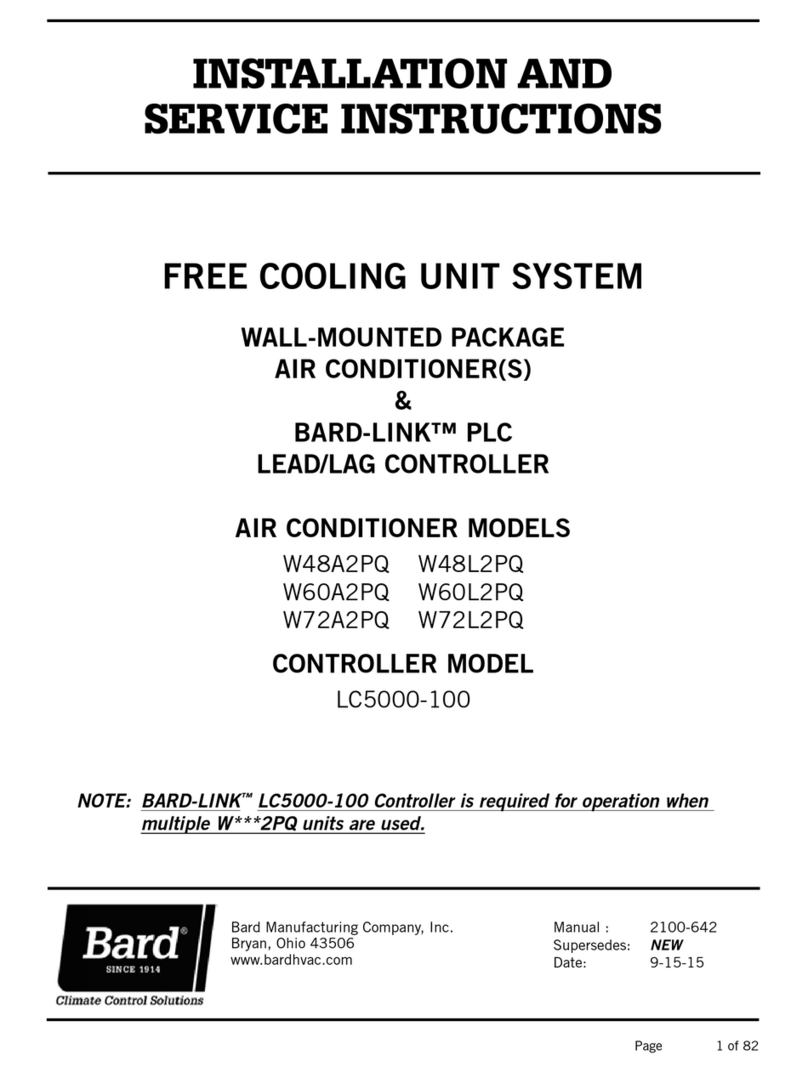
Bard
Bard W48A2PQ Quick guide
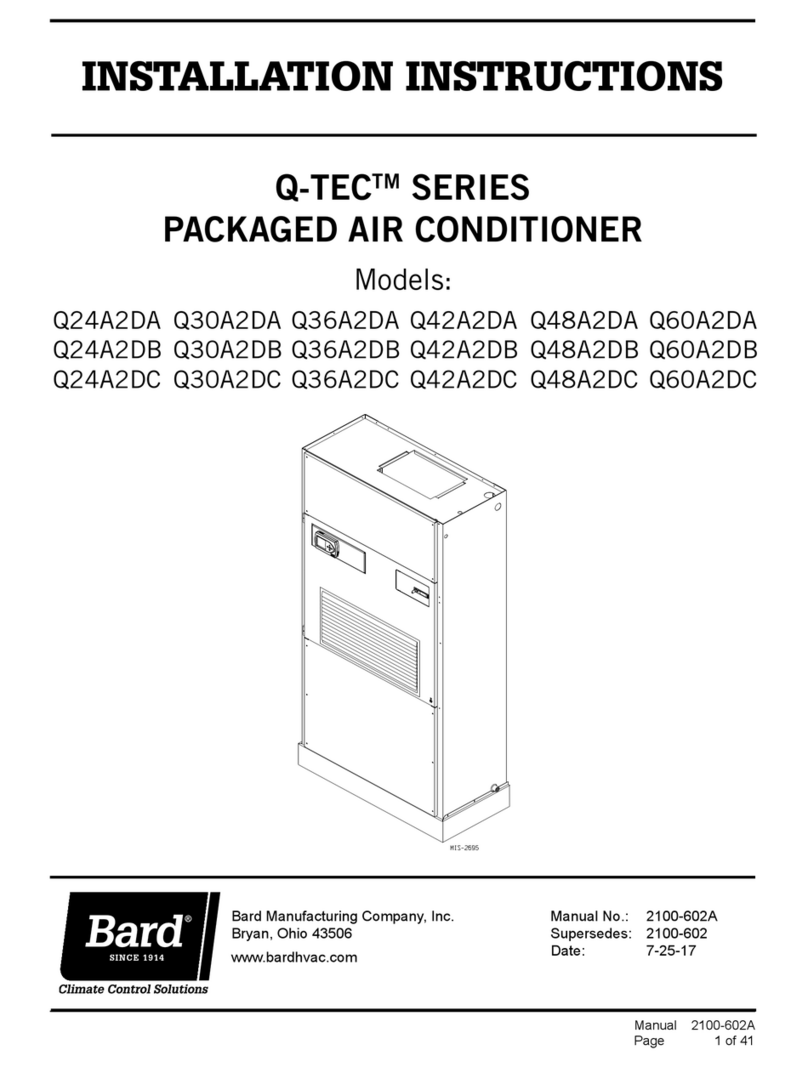
Bard
Bard Q24A2DA User manual
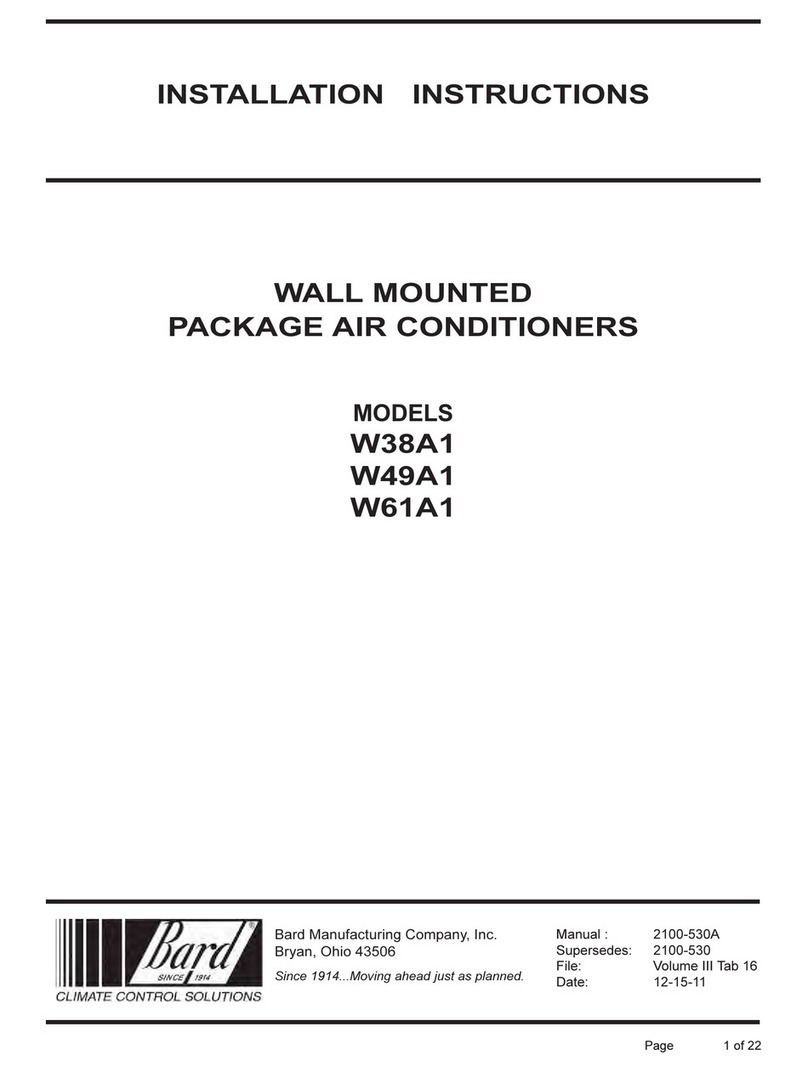
Bard
Bard W38A1 User manual

Bard
Bard FUSION-TEC WR36BPA Operating instructions
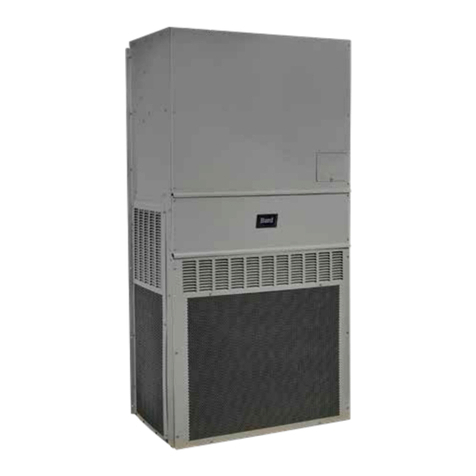
Bard
Bard MULTI-TEC W42ACE Series Operating instructions

Bard
Bard QA241D User manual
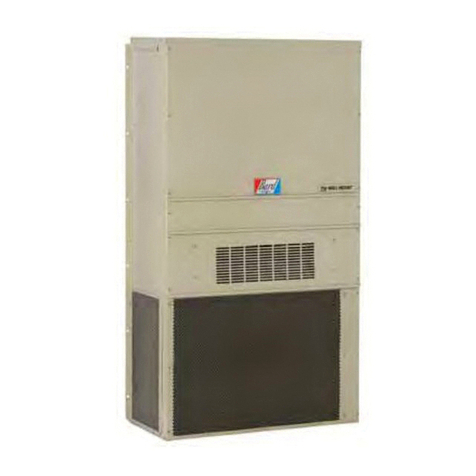
Bard
Bard W18A1 User manual
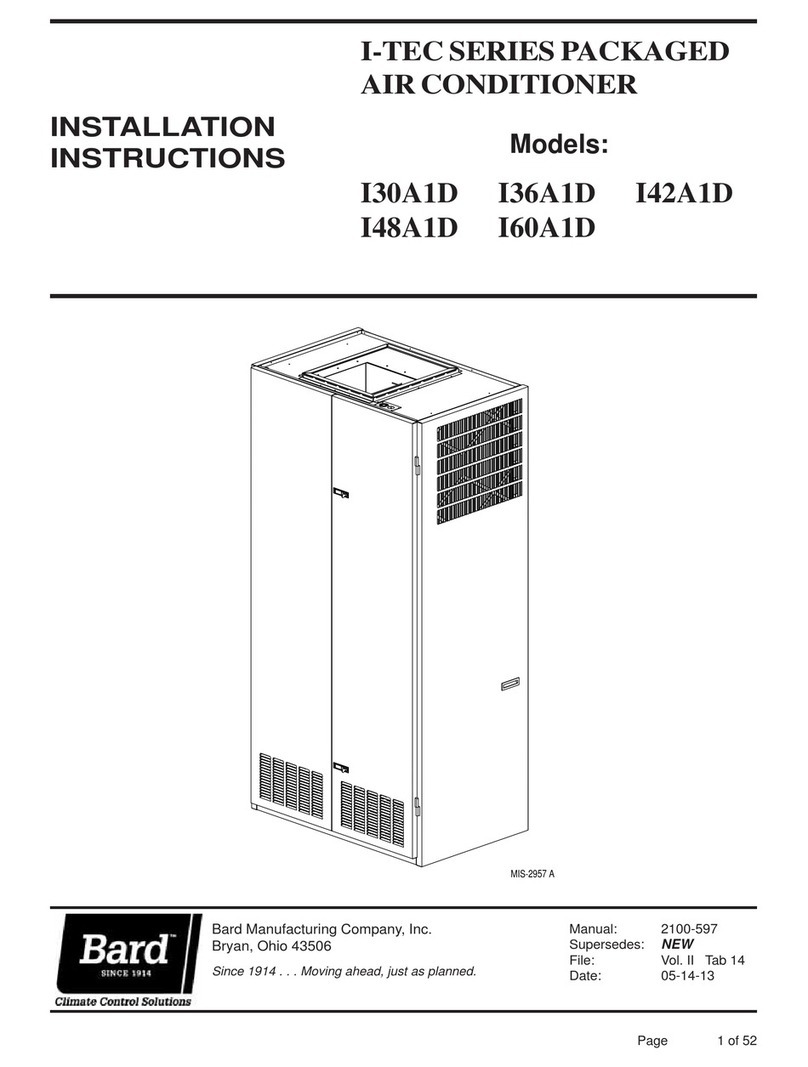
Bard
Bard I-TEC I30A1D User manual

Bard
Bard WA421 User manual
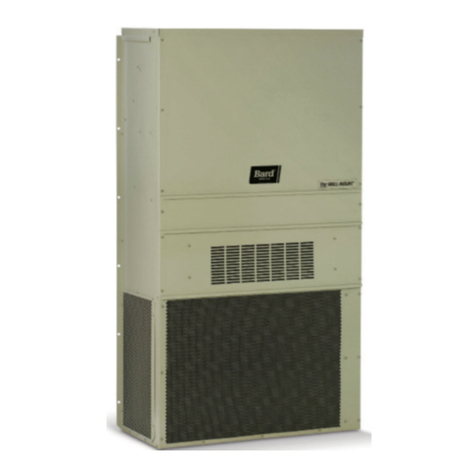
Bard
Bard MULTI-TEC W18AAPA User manual
